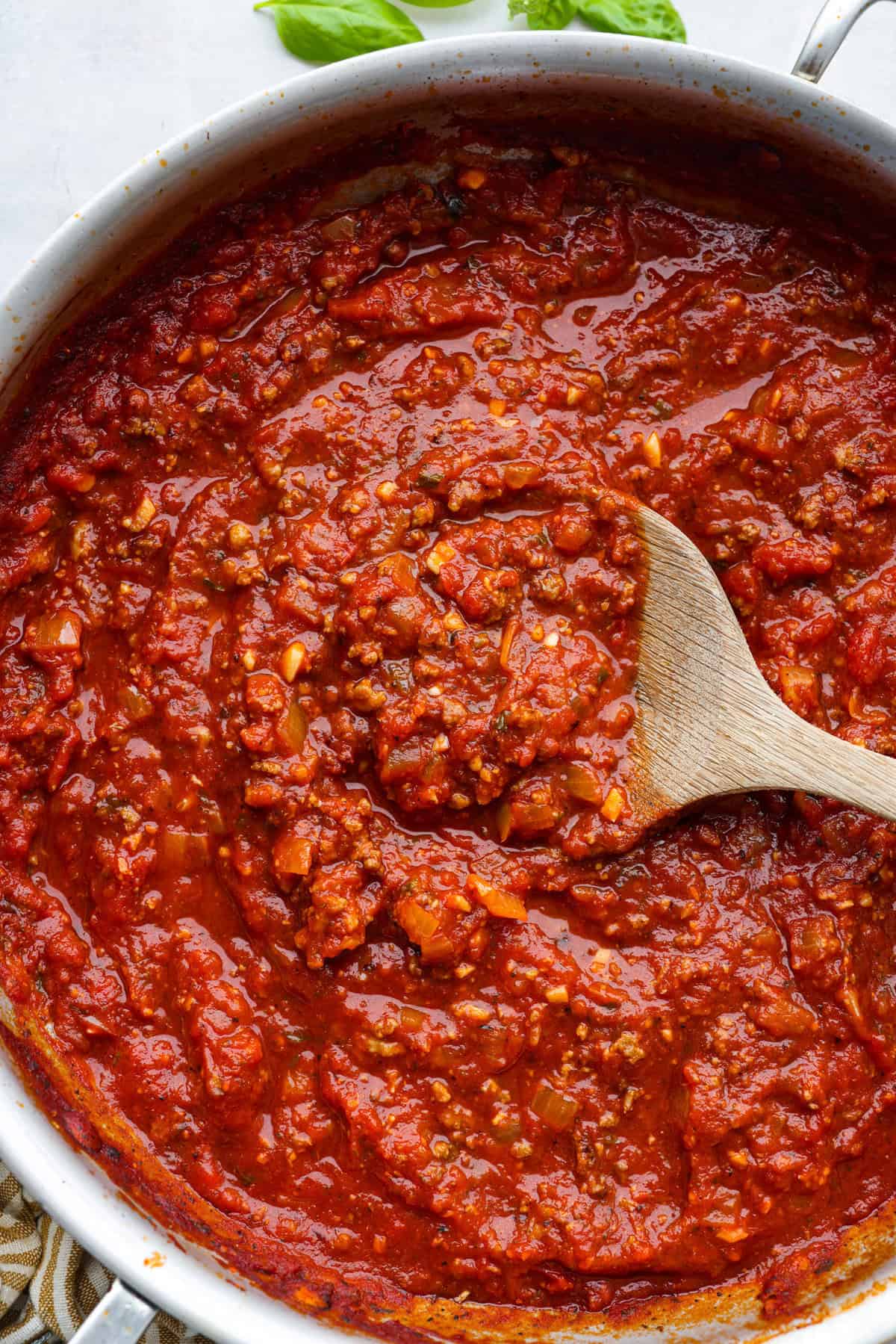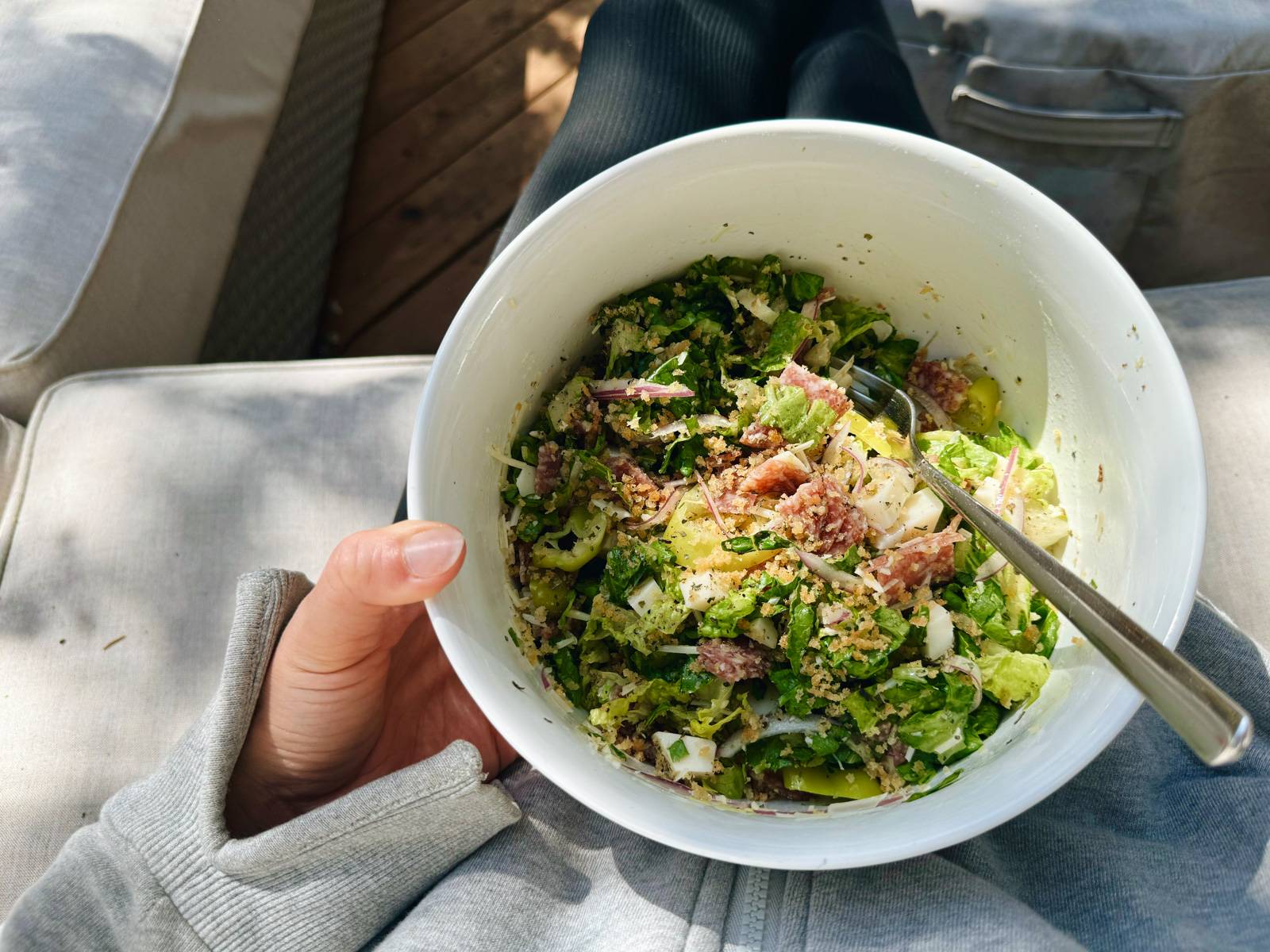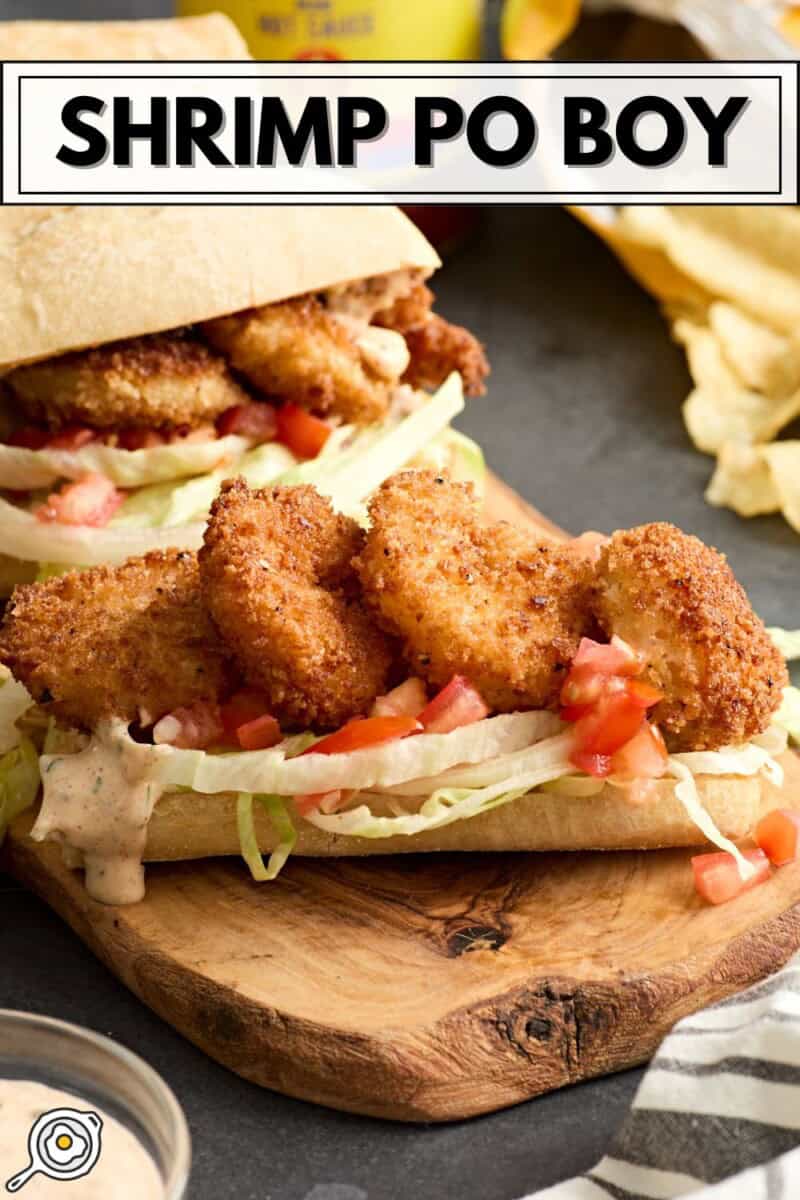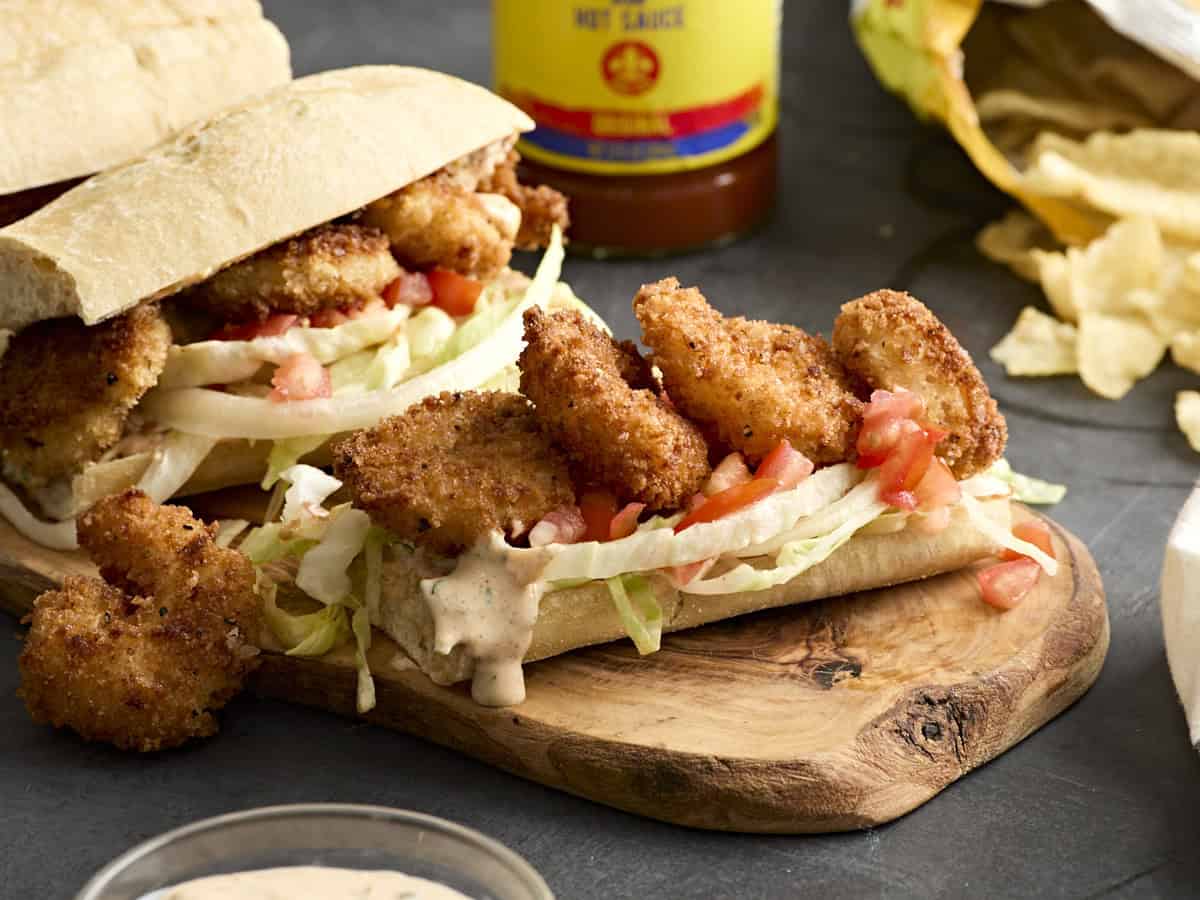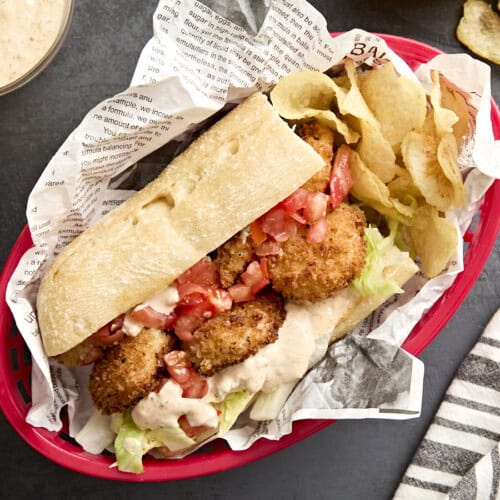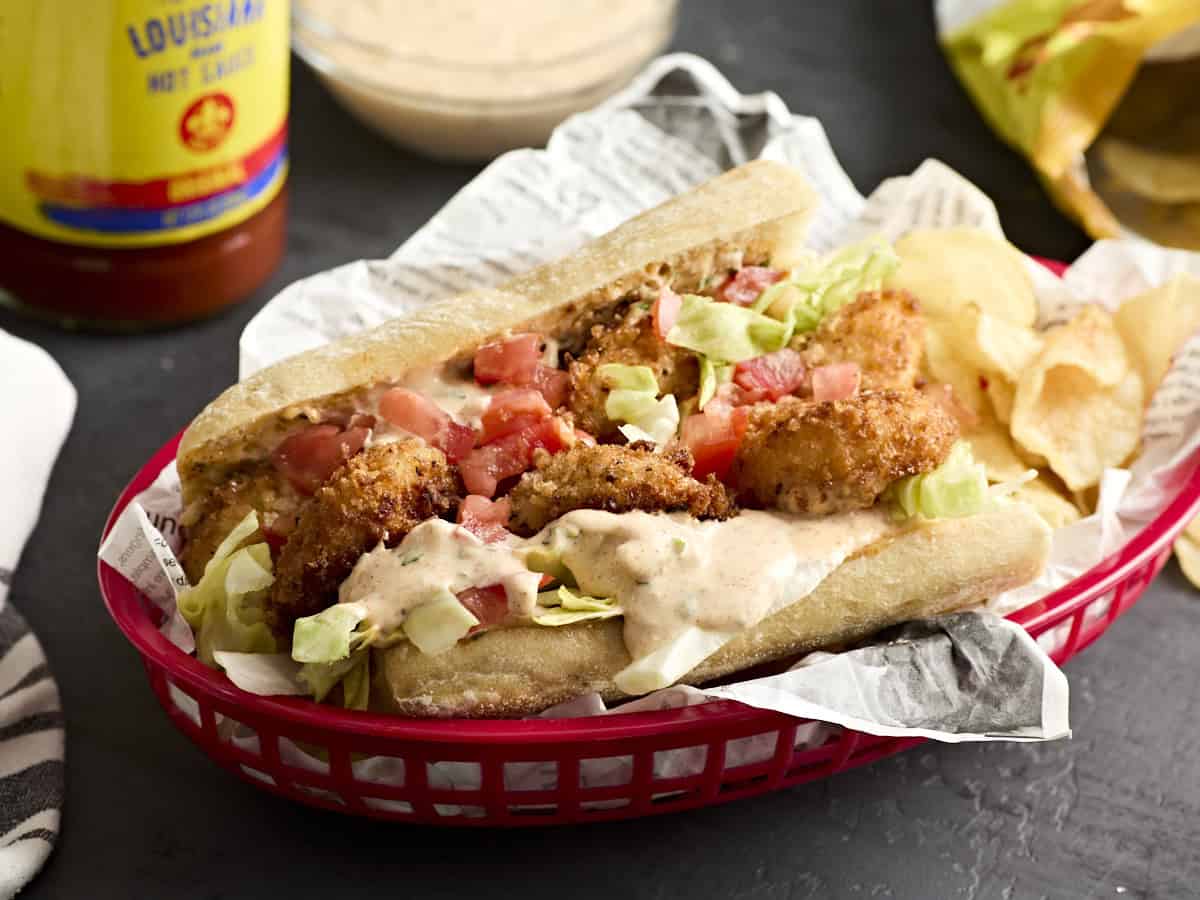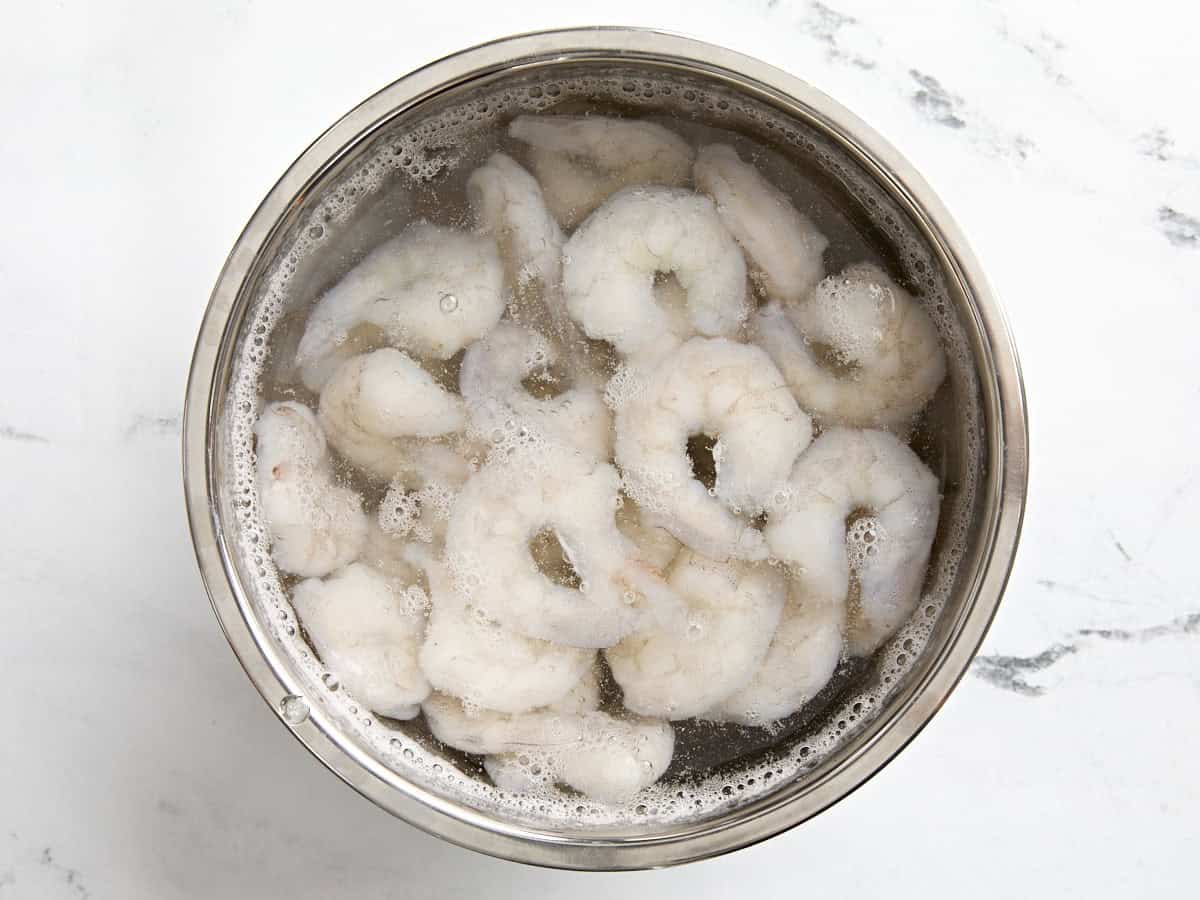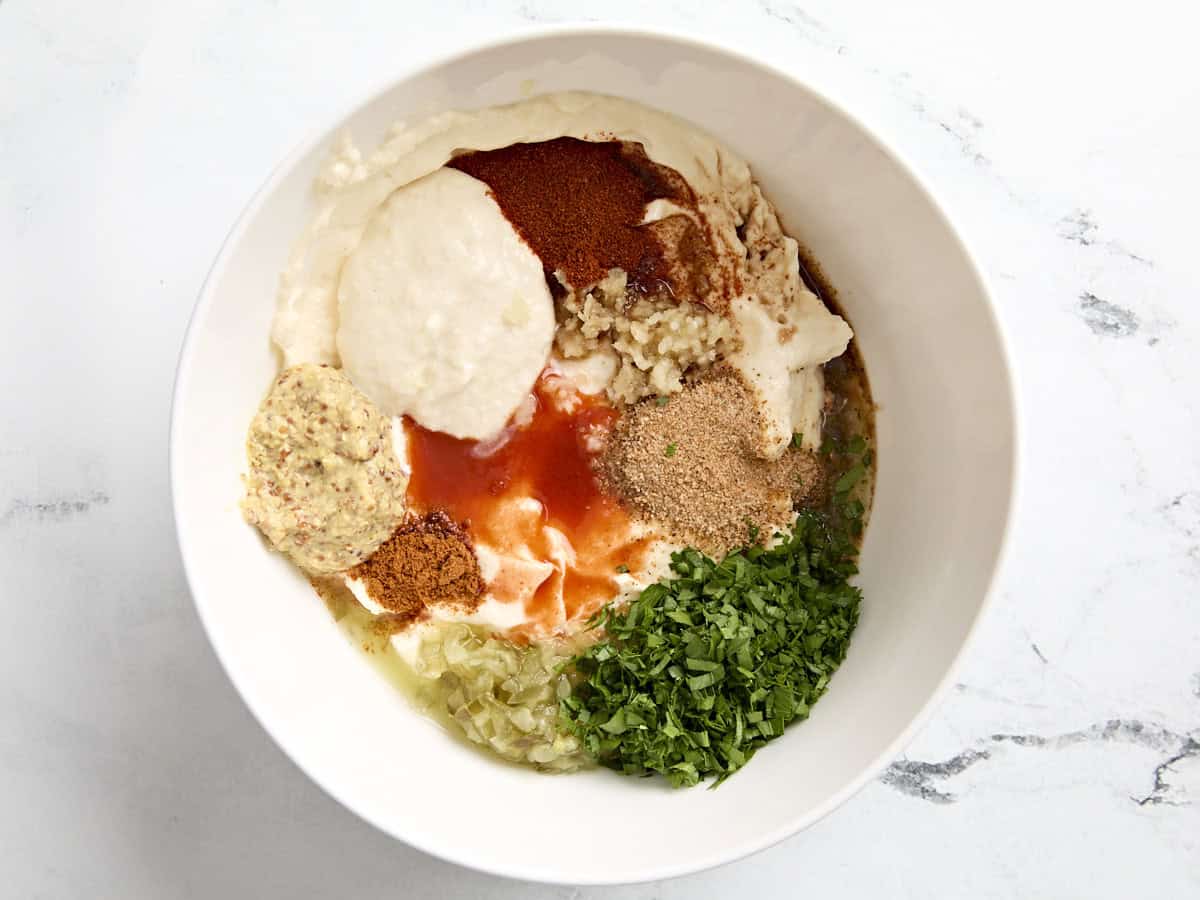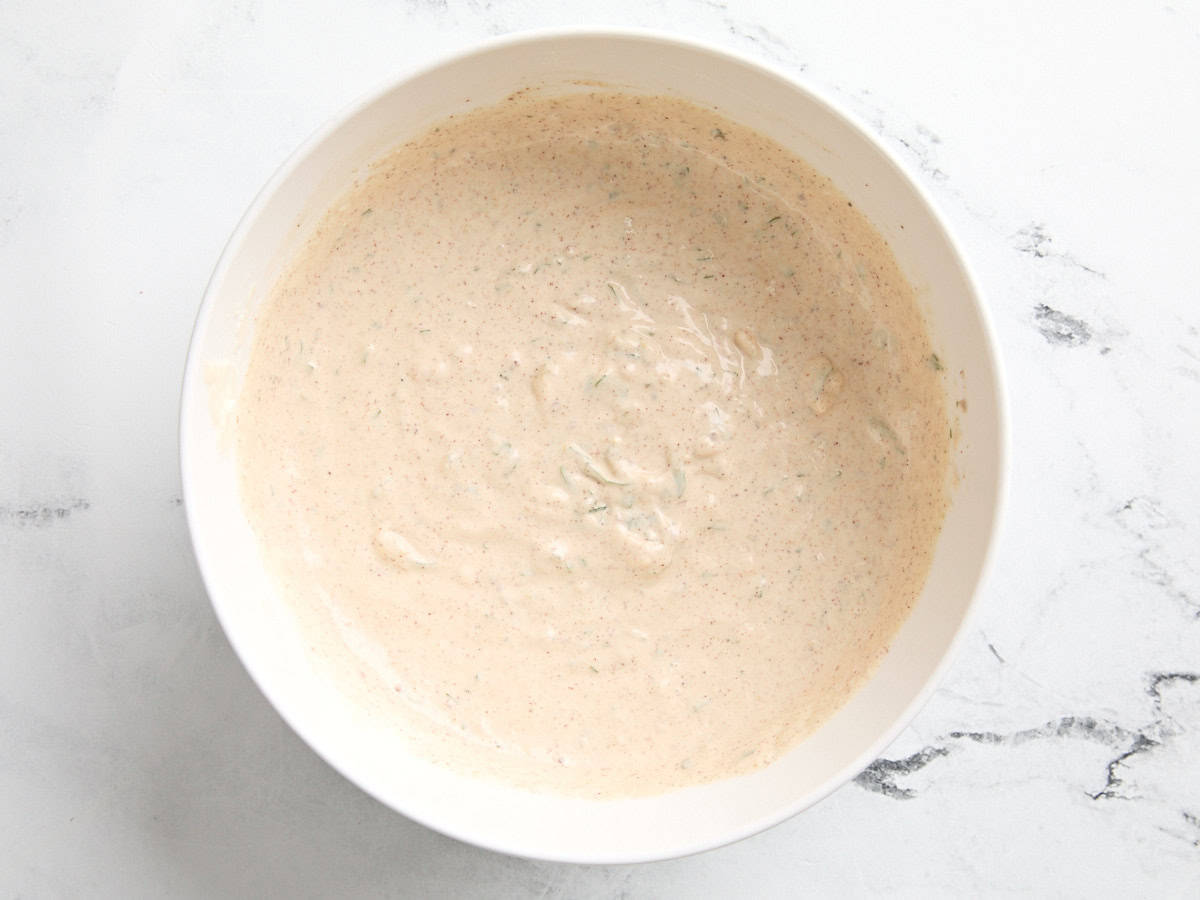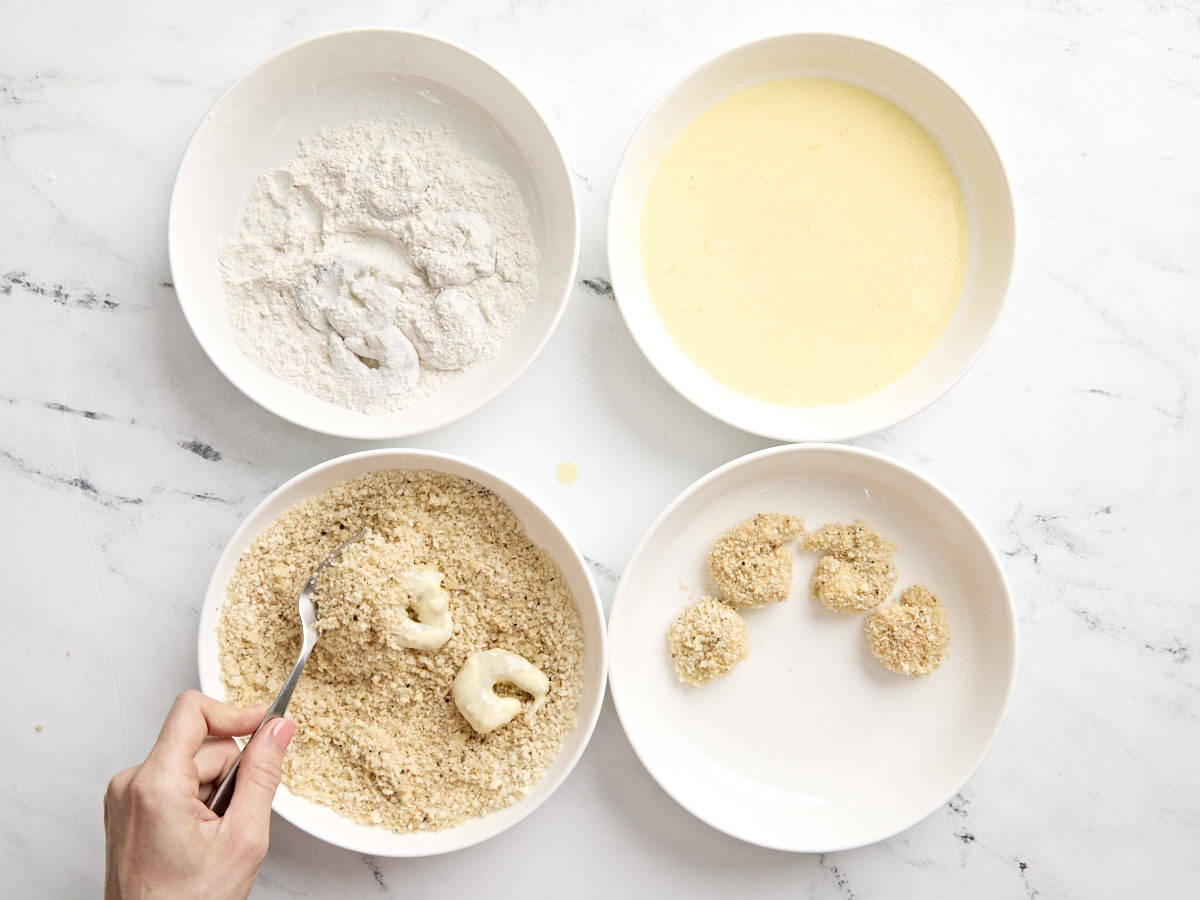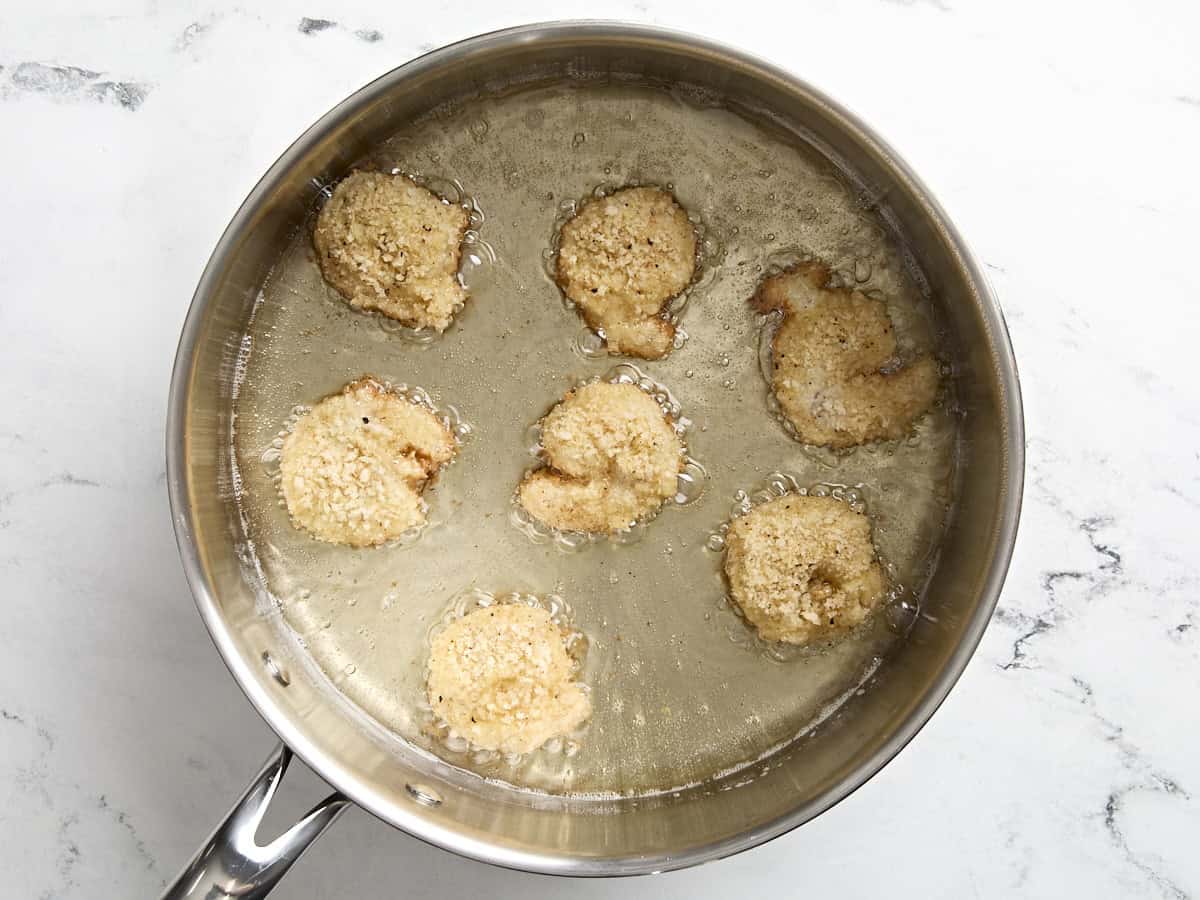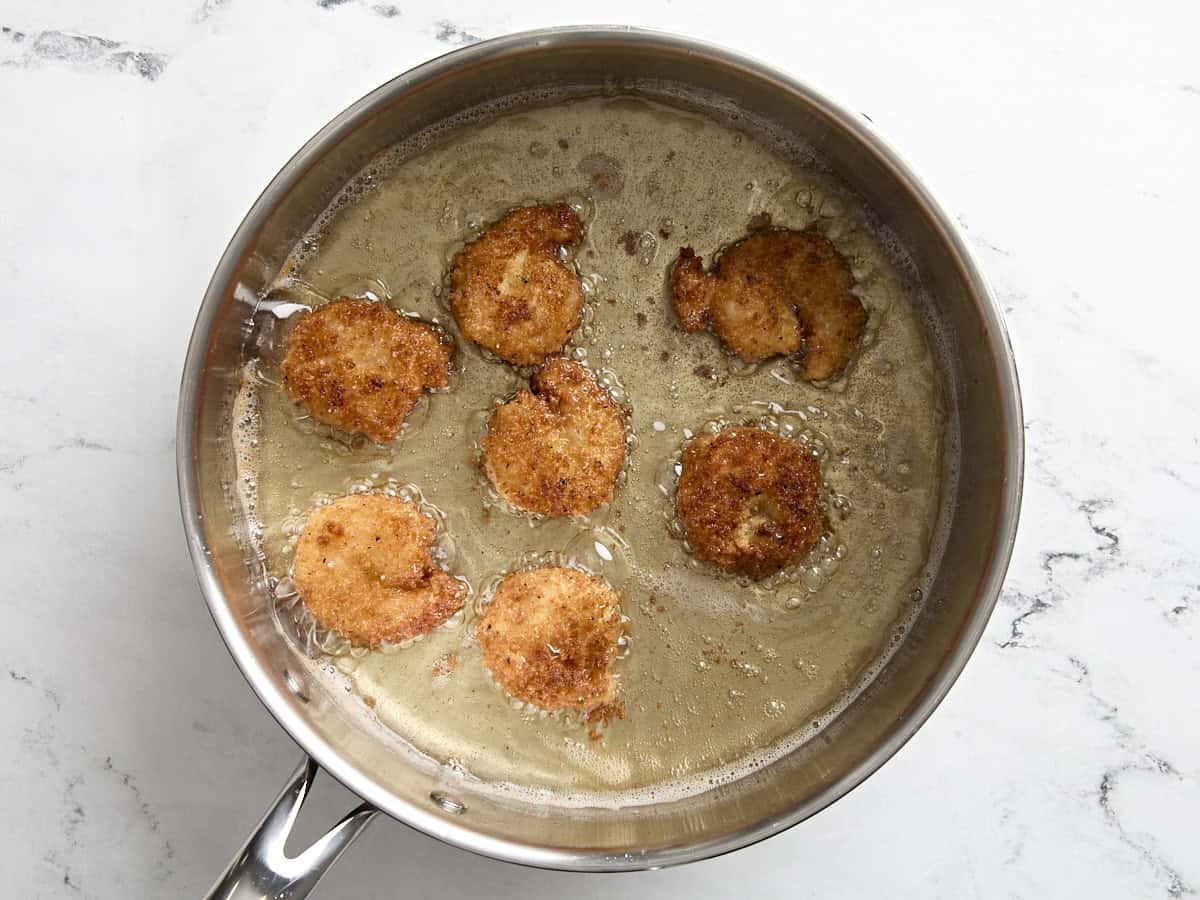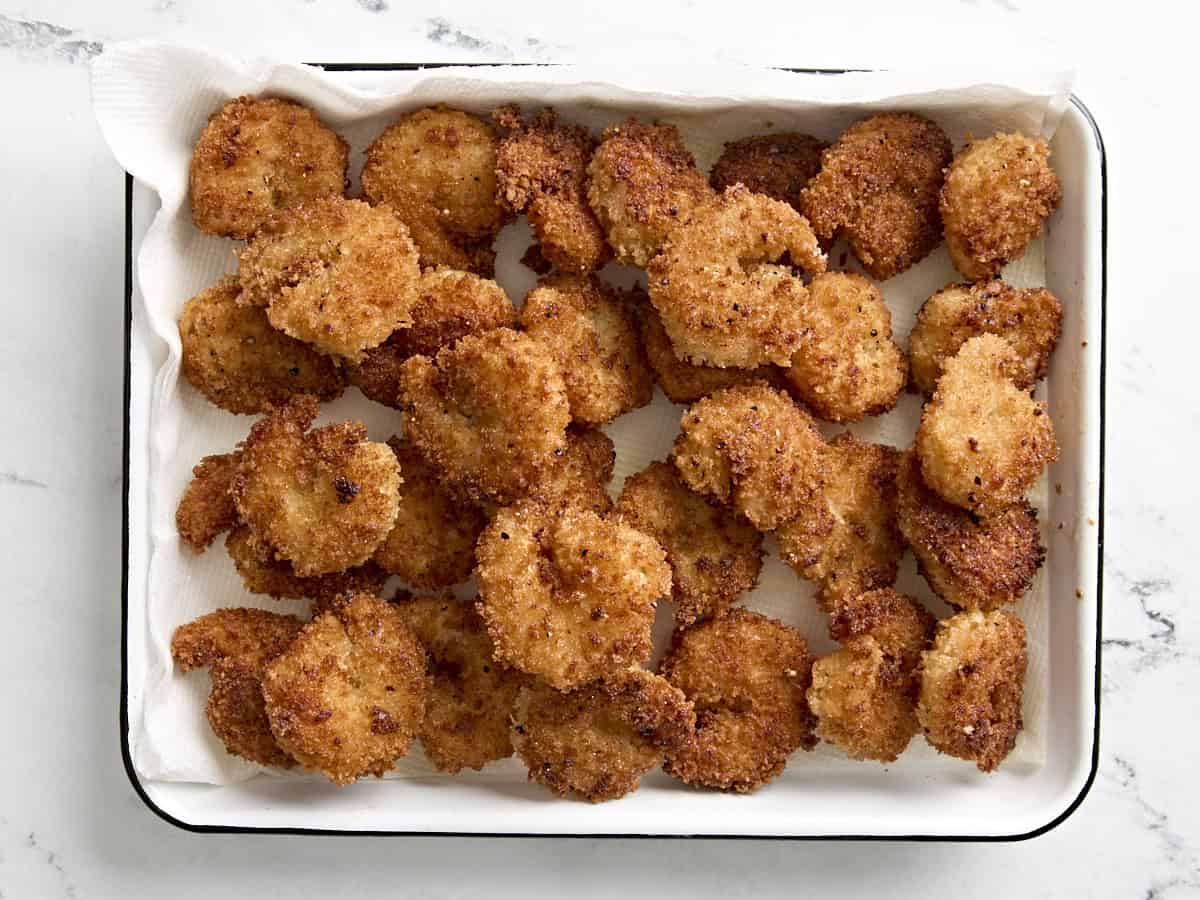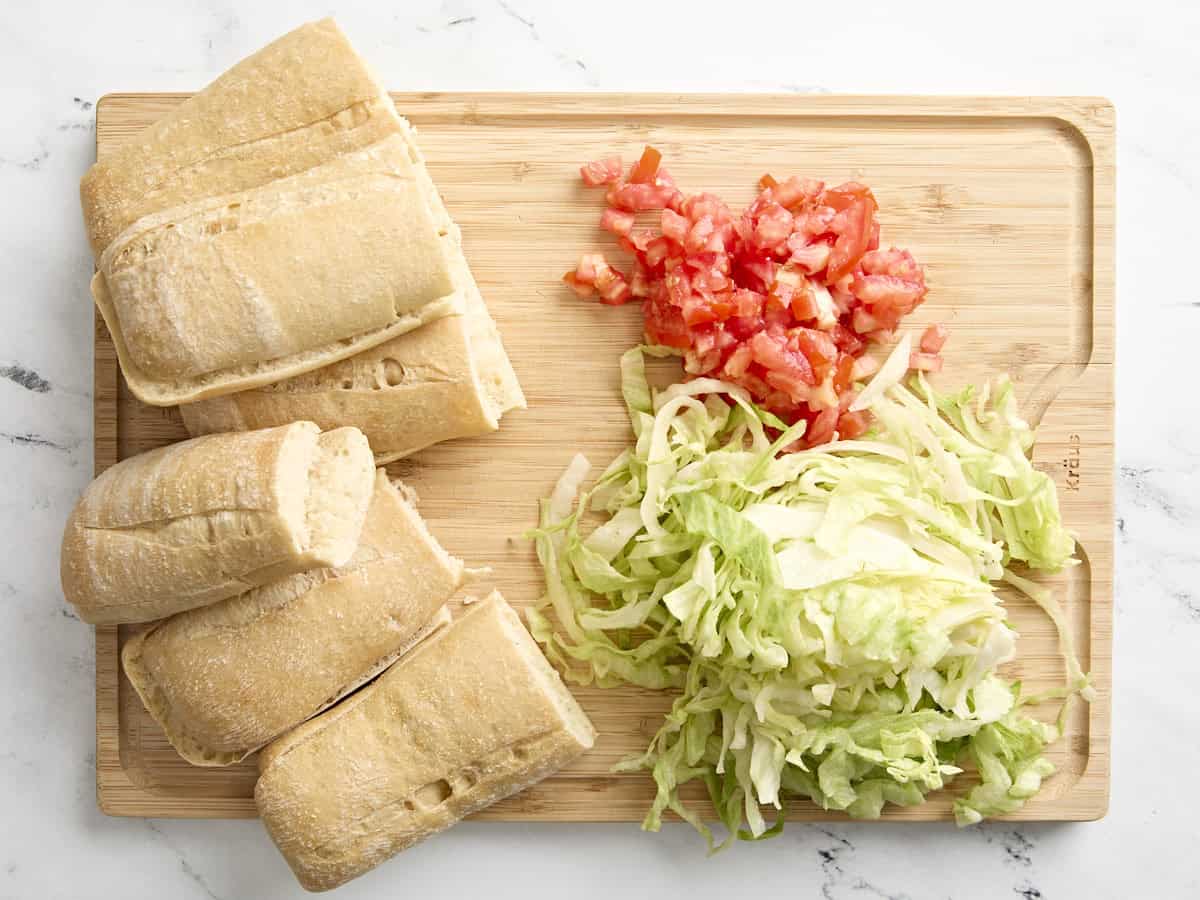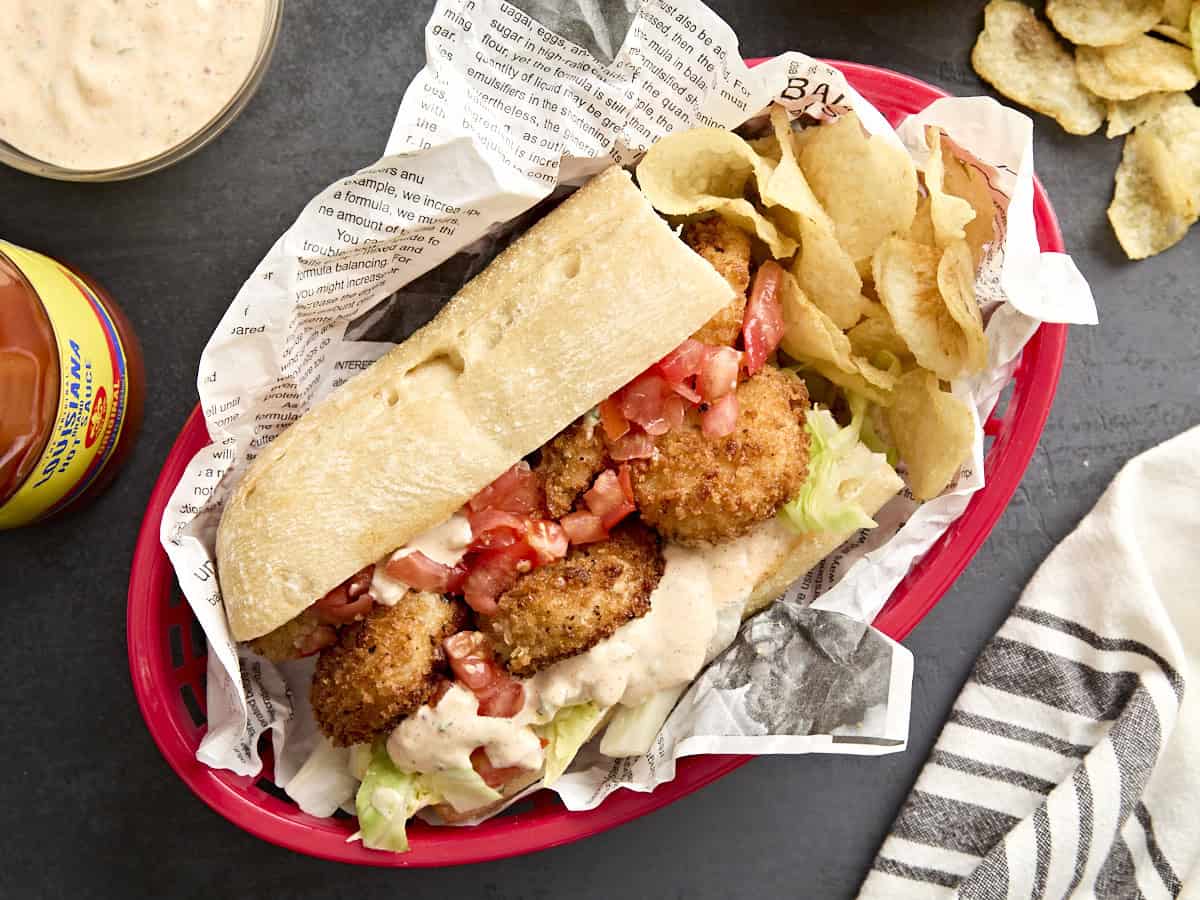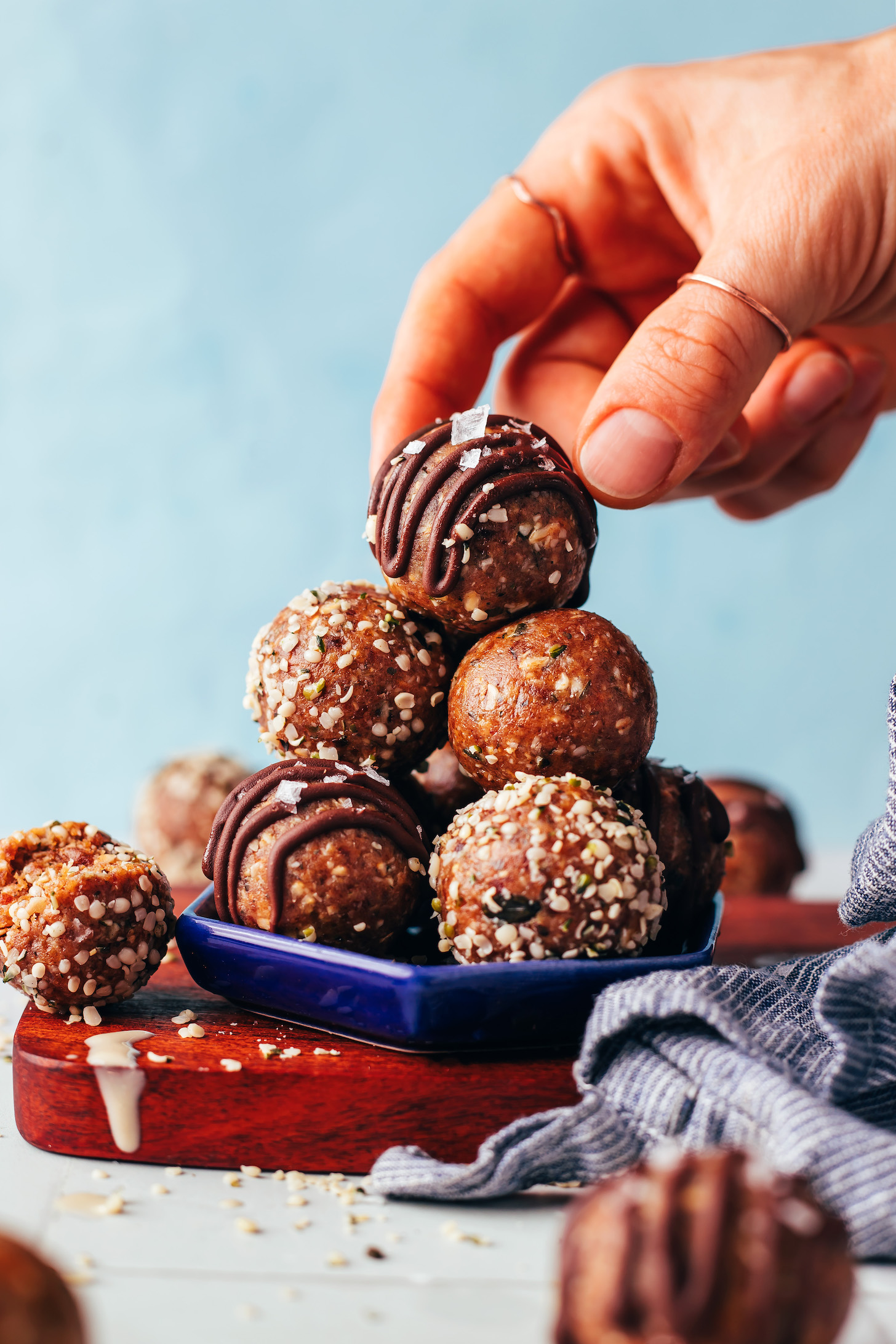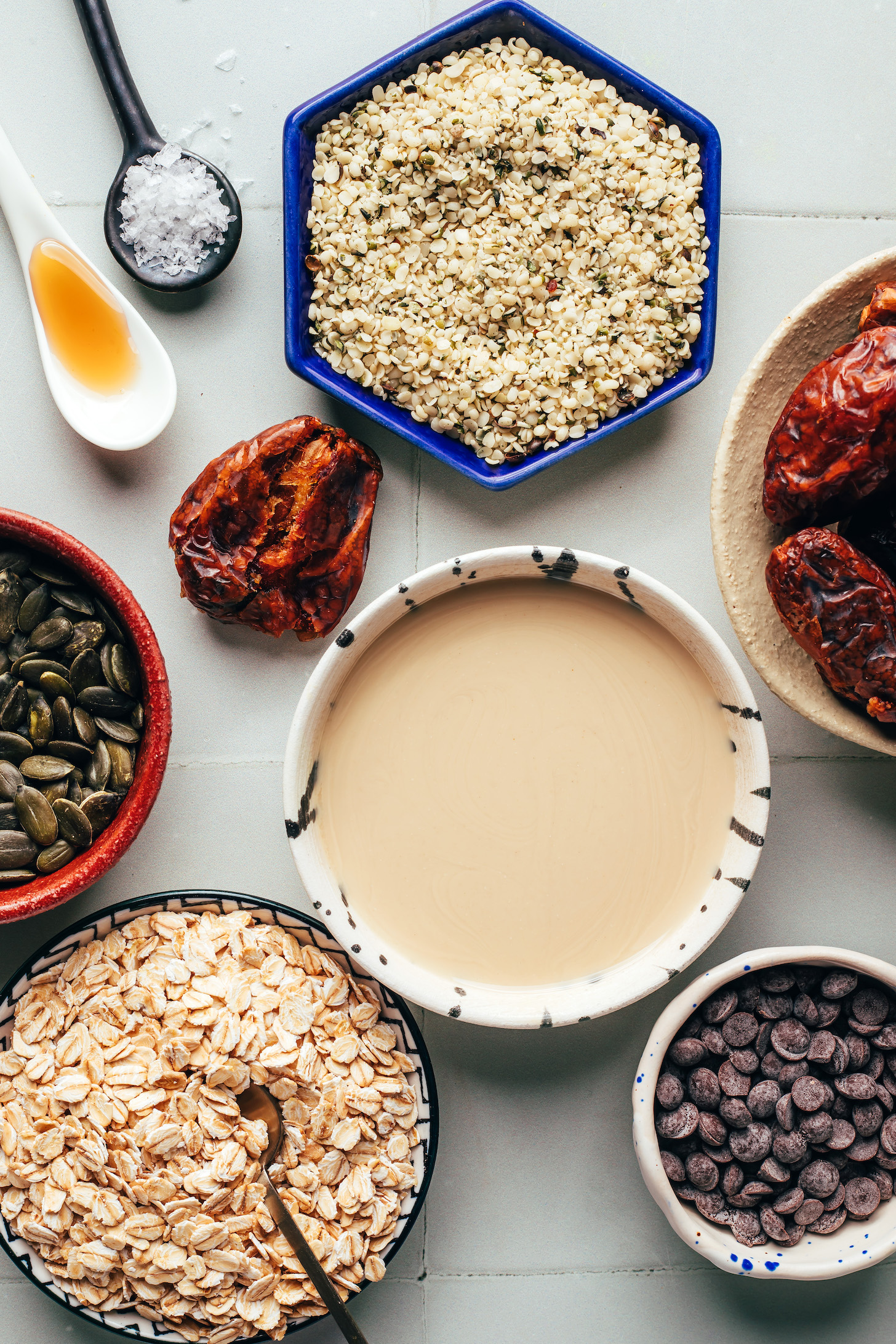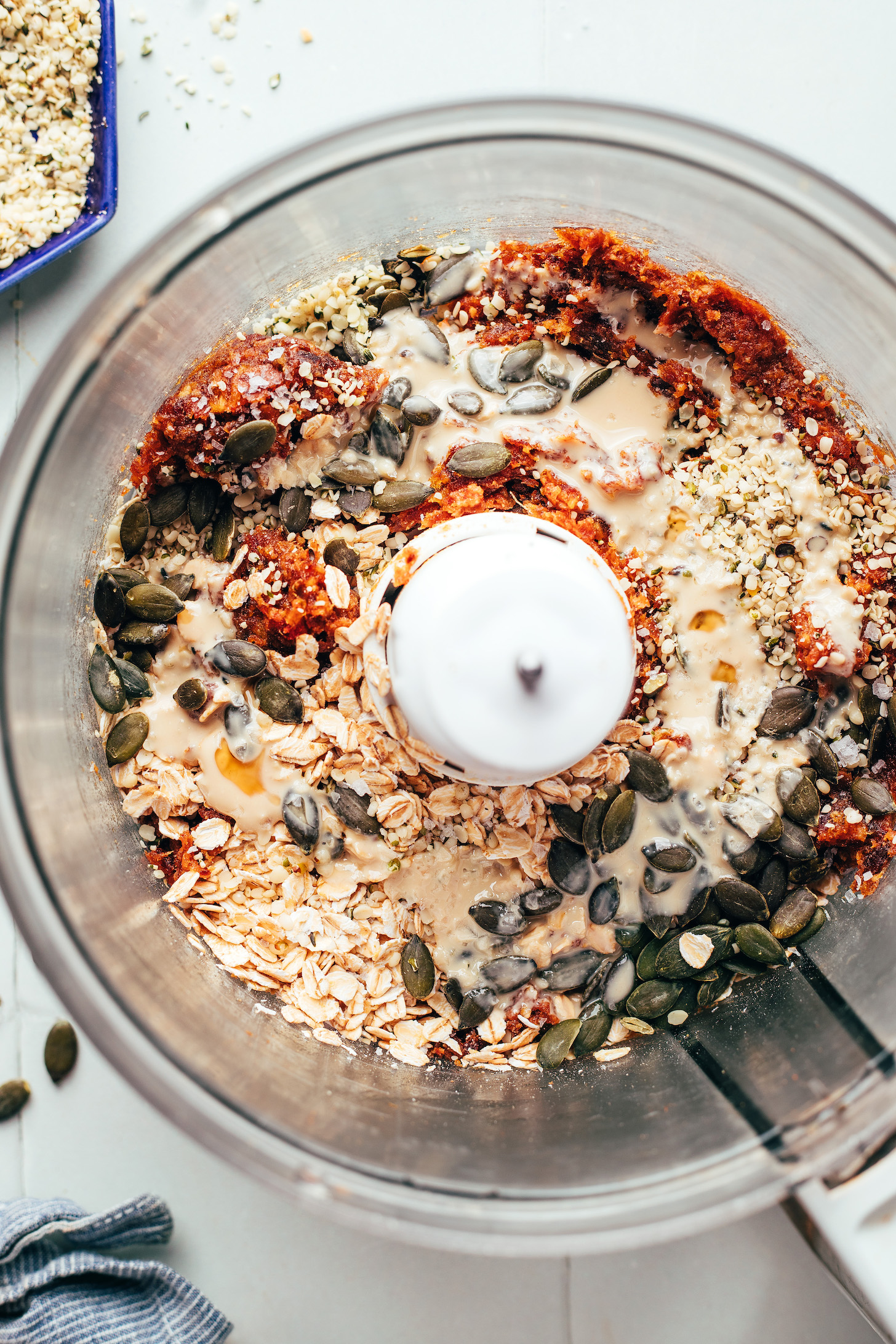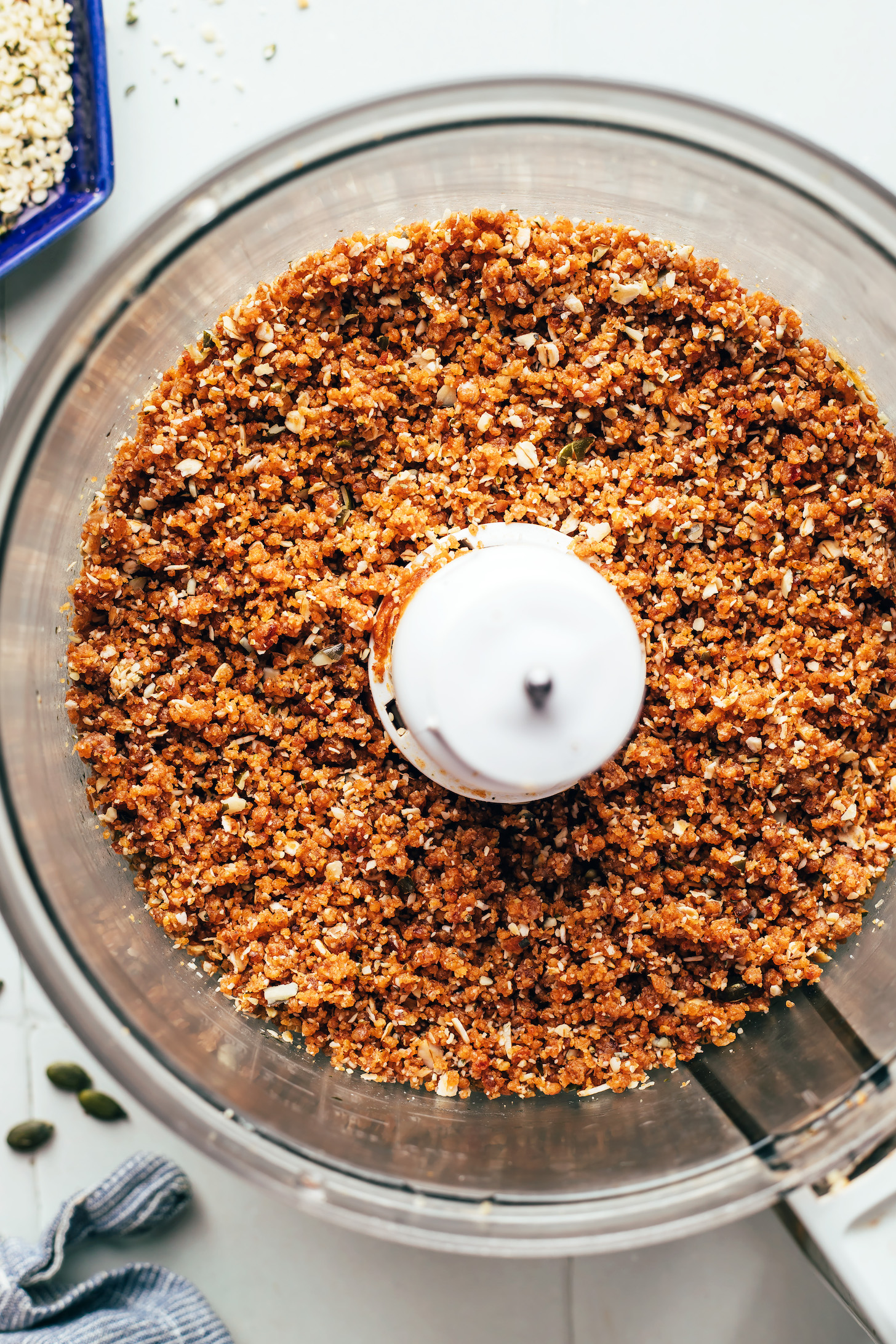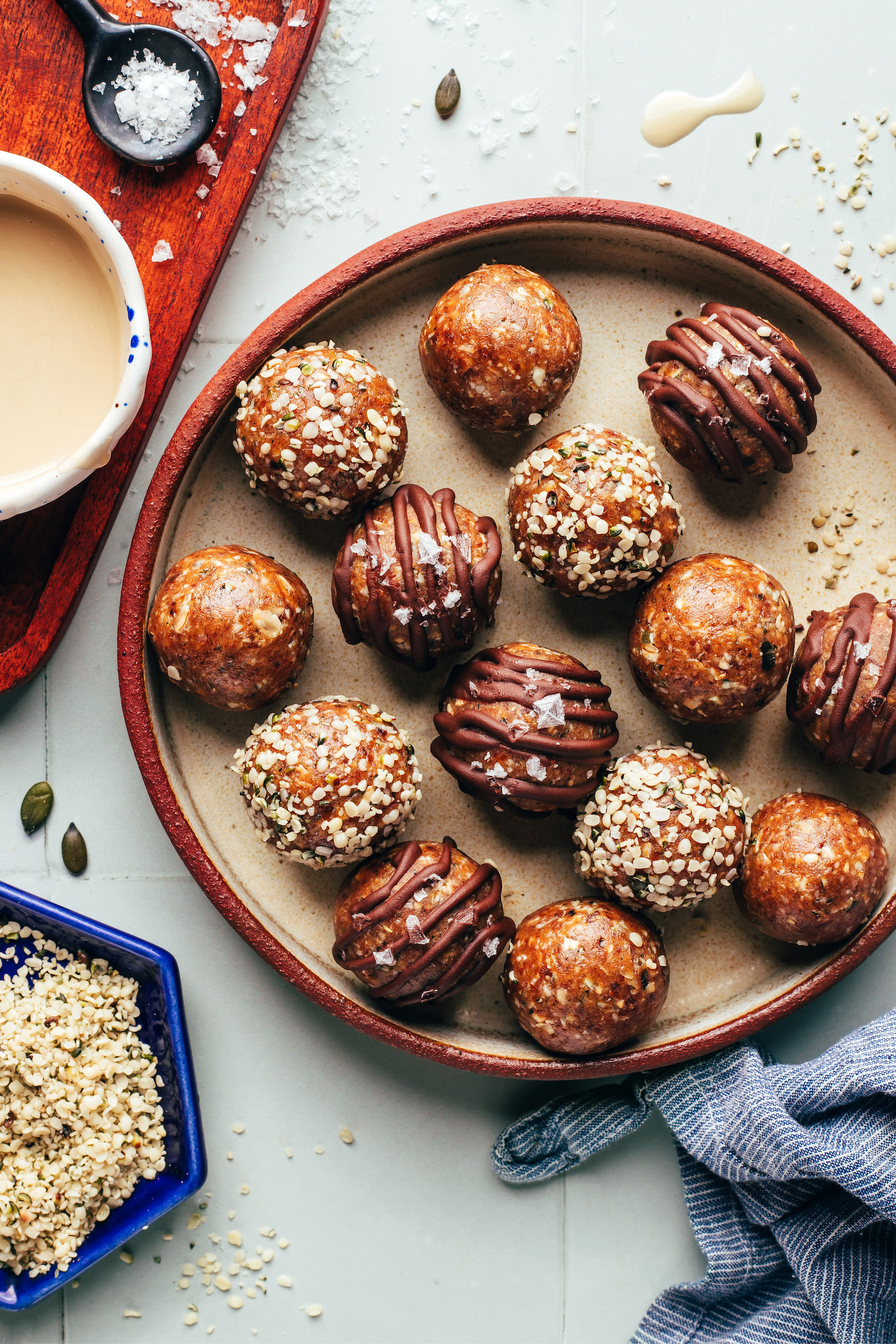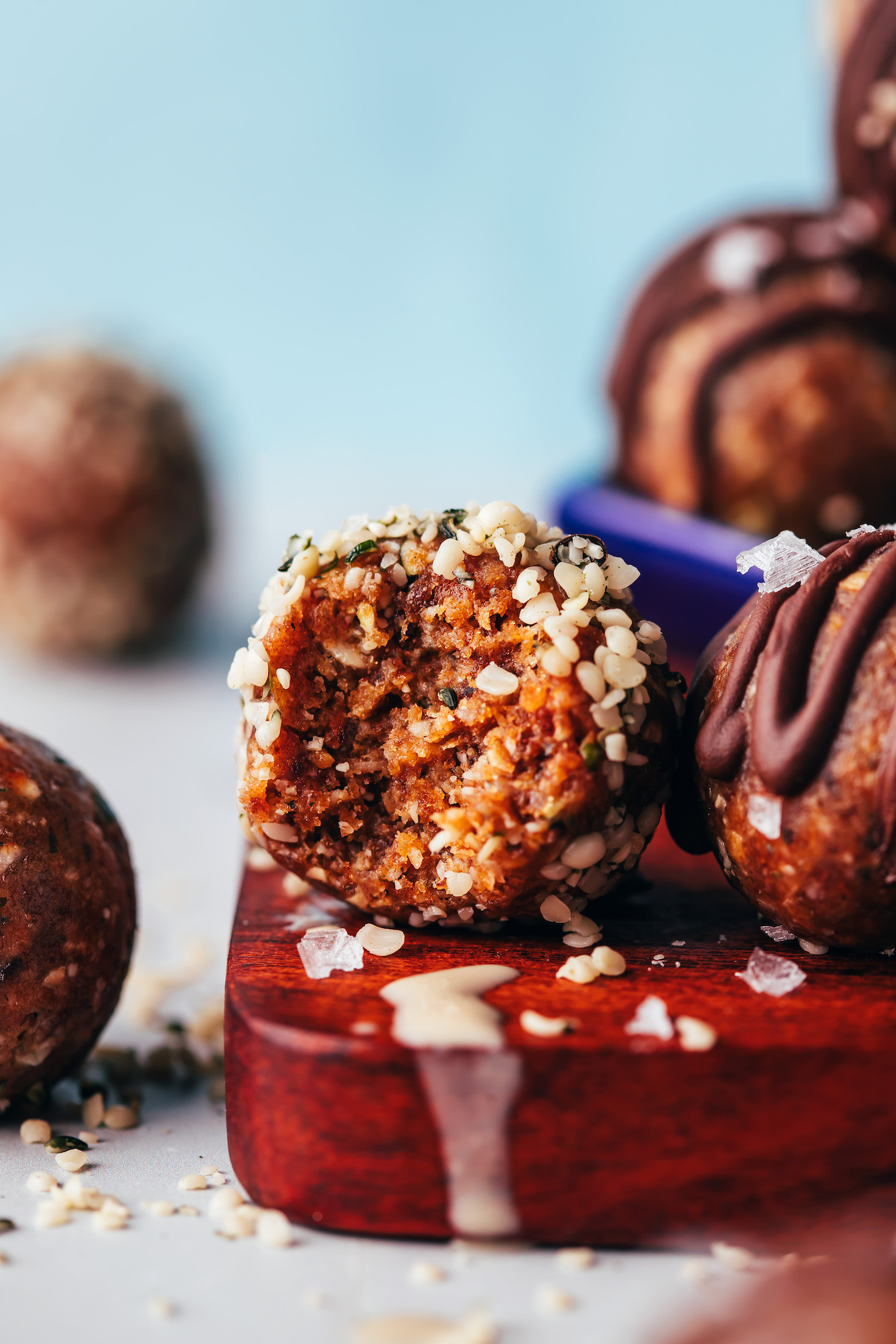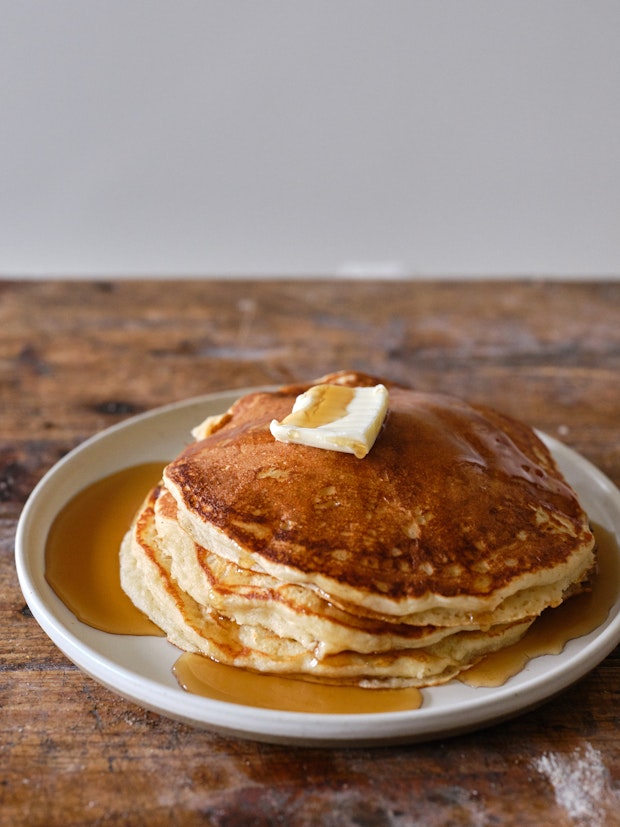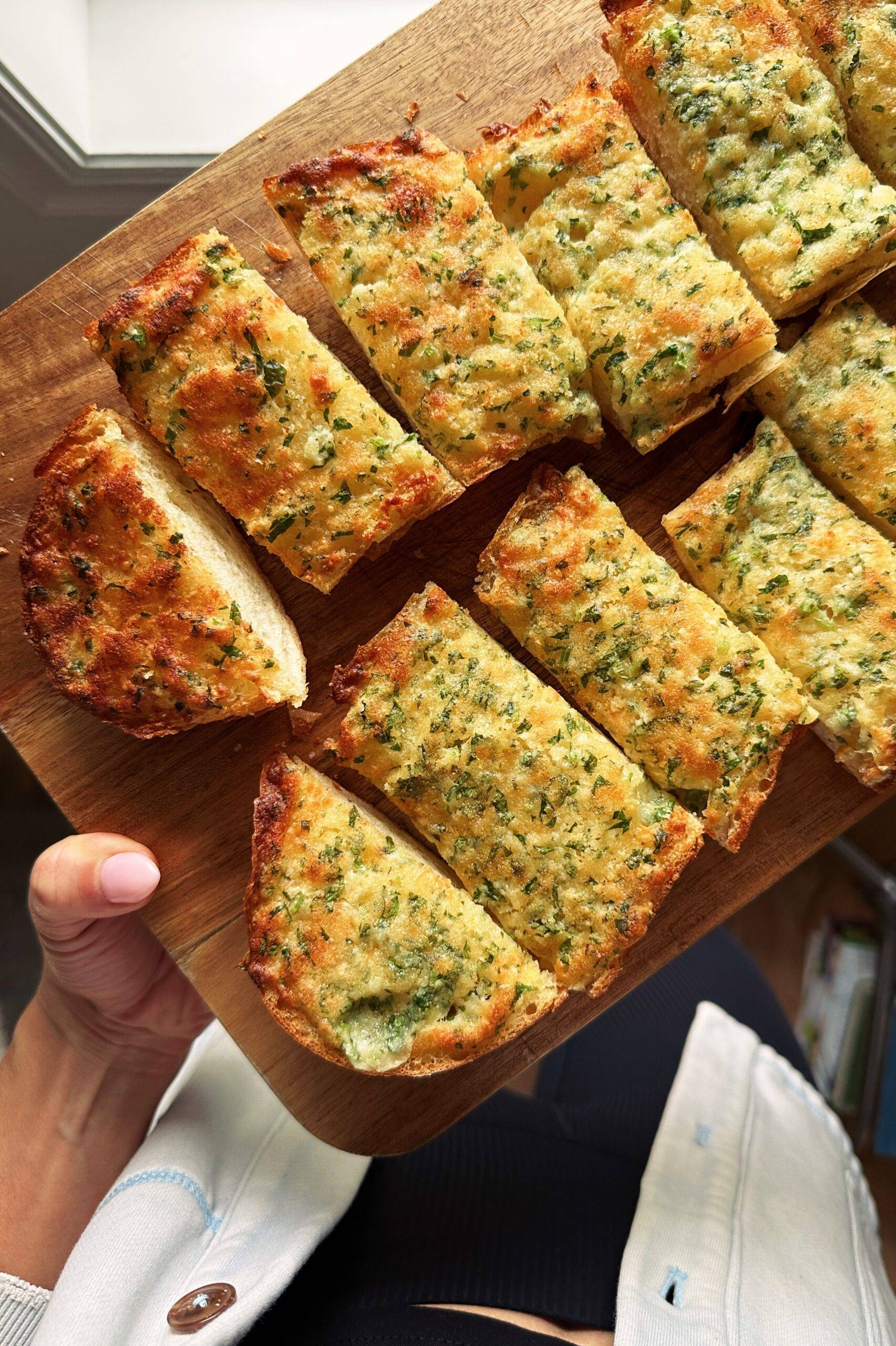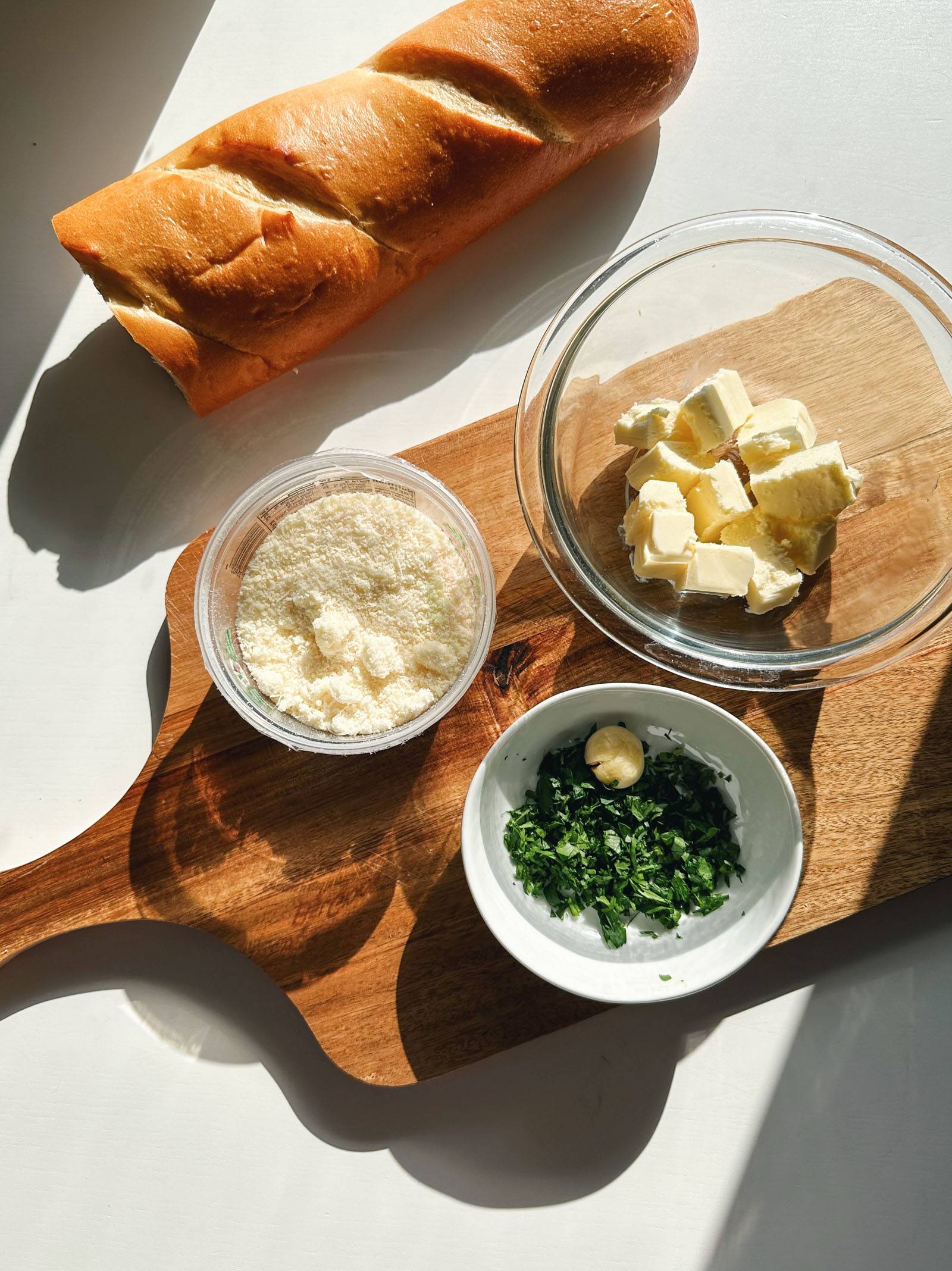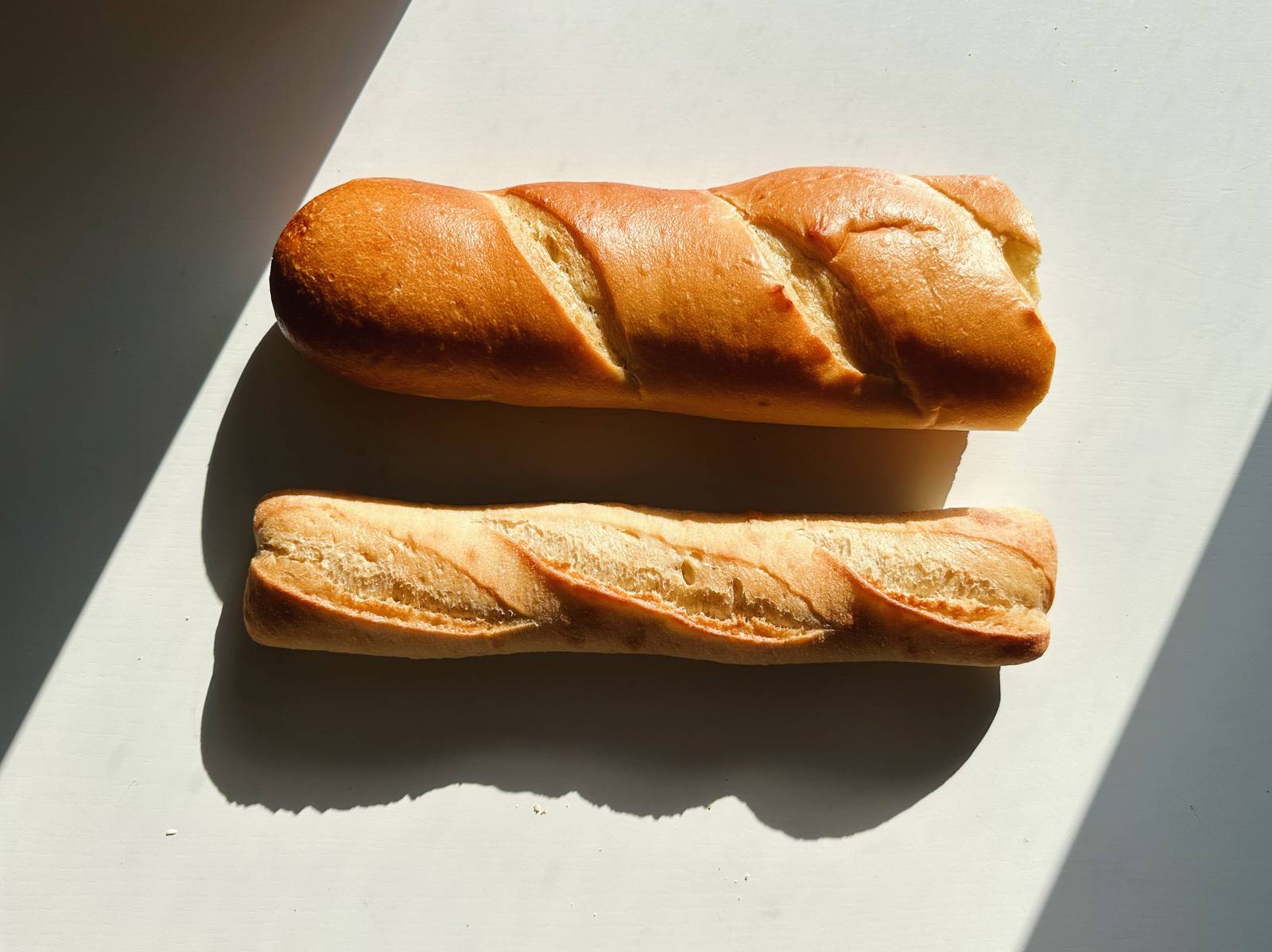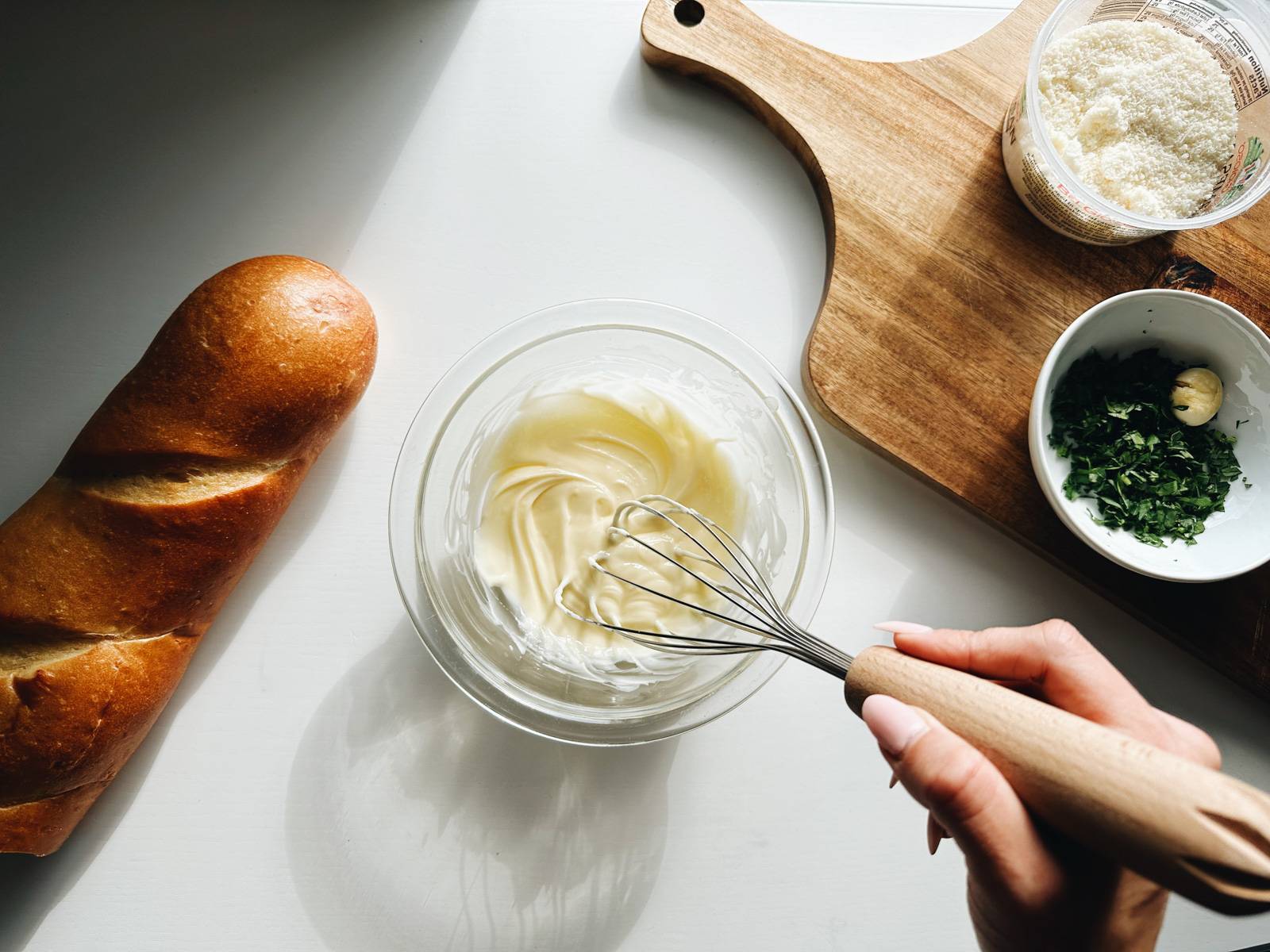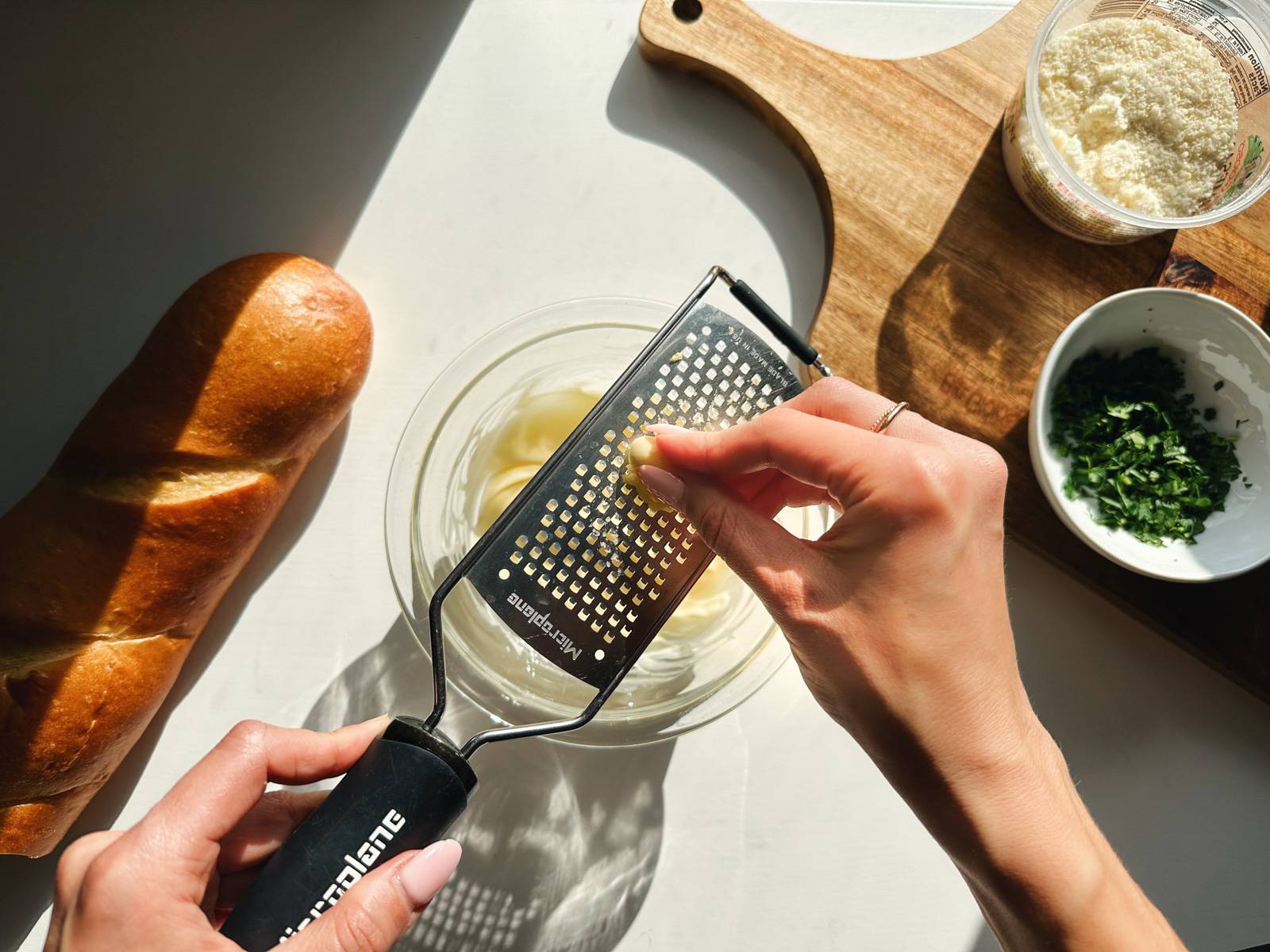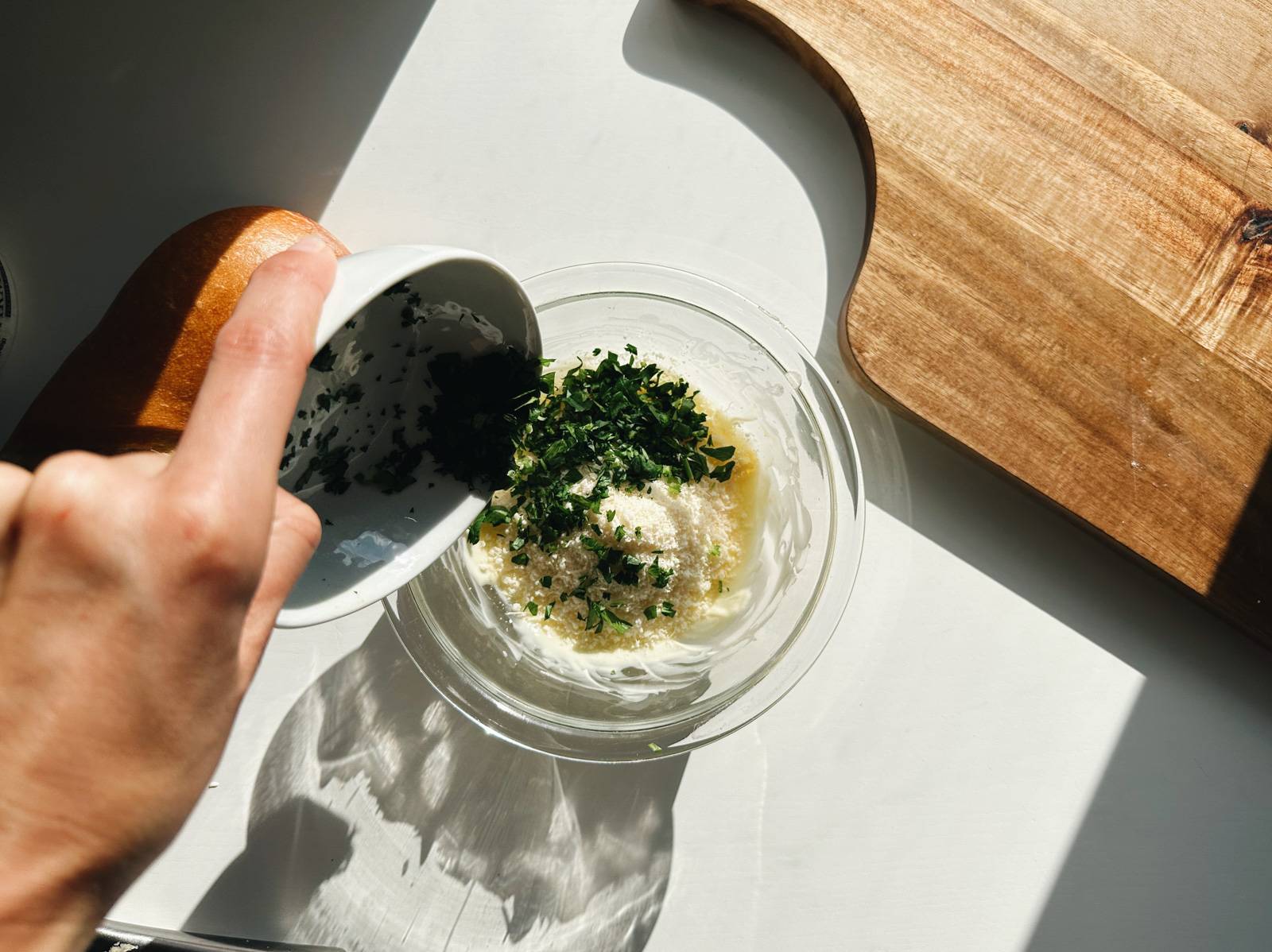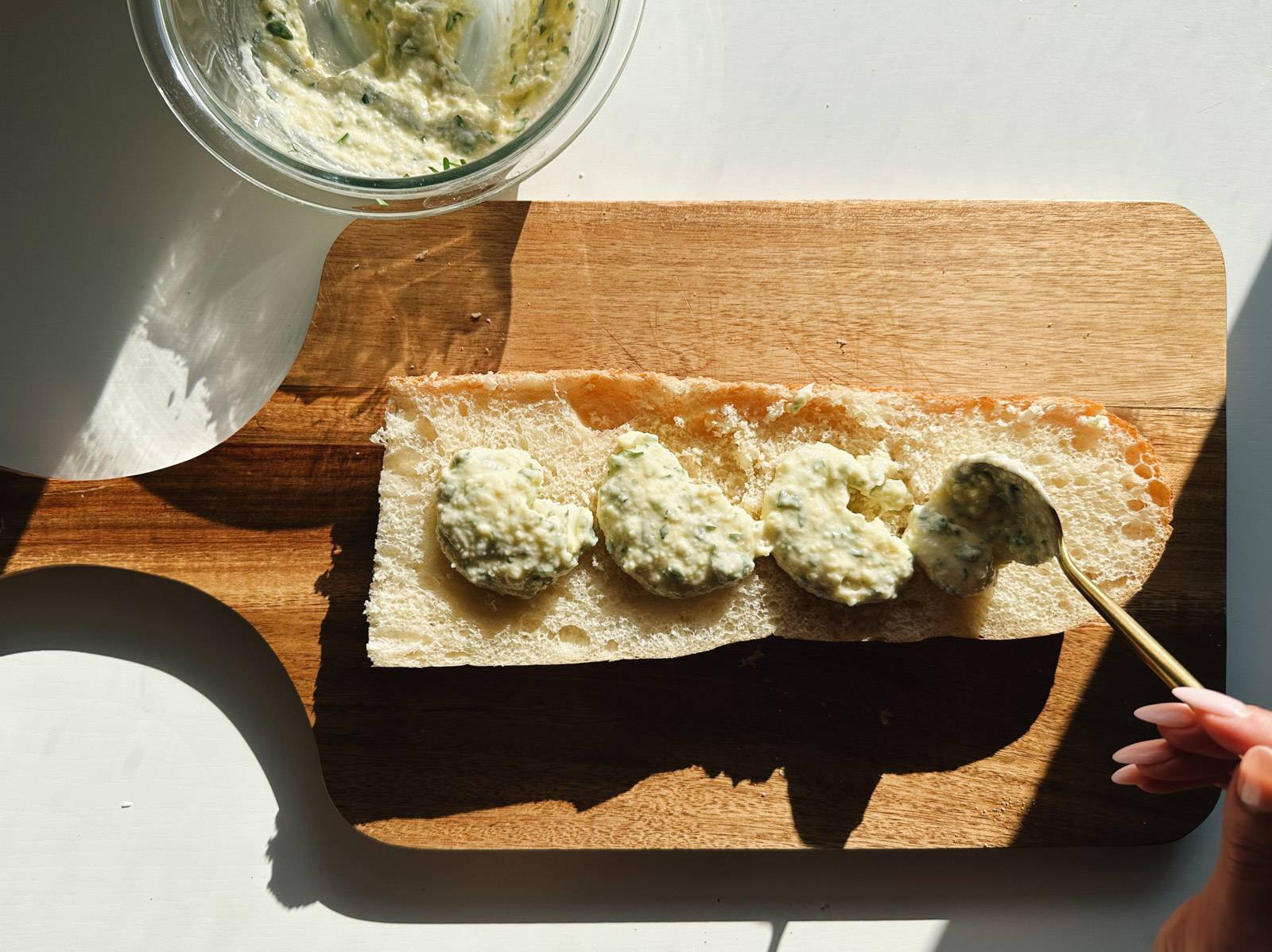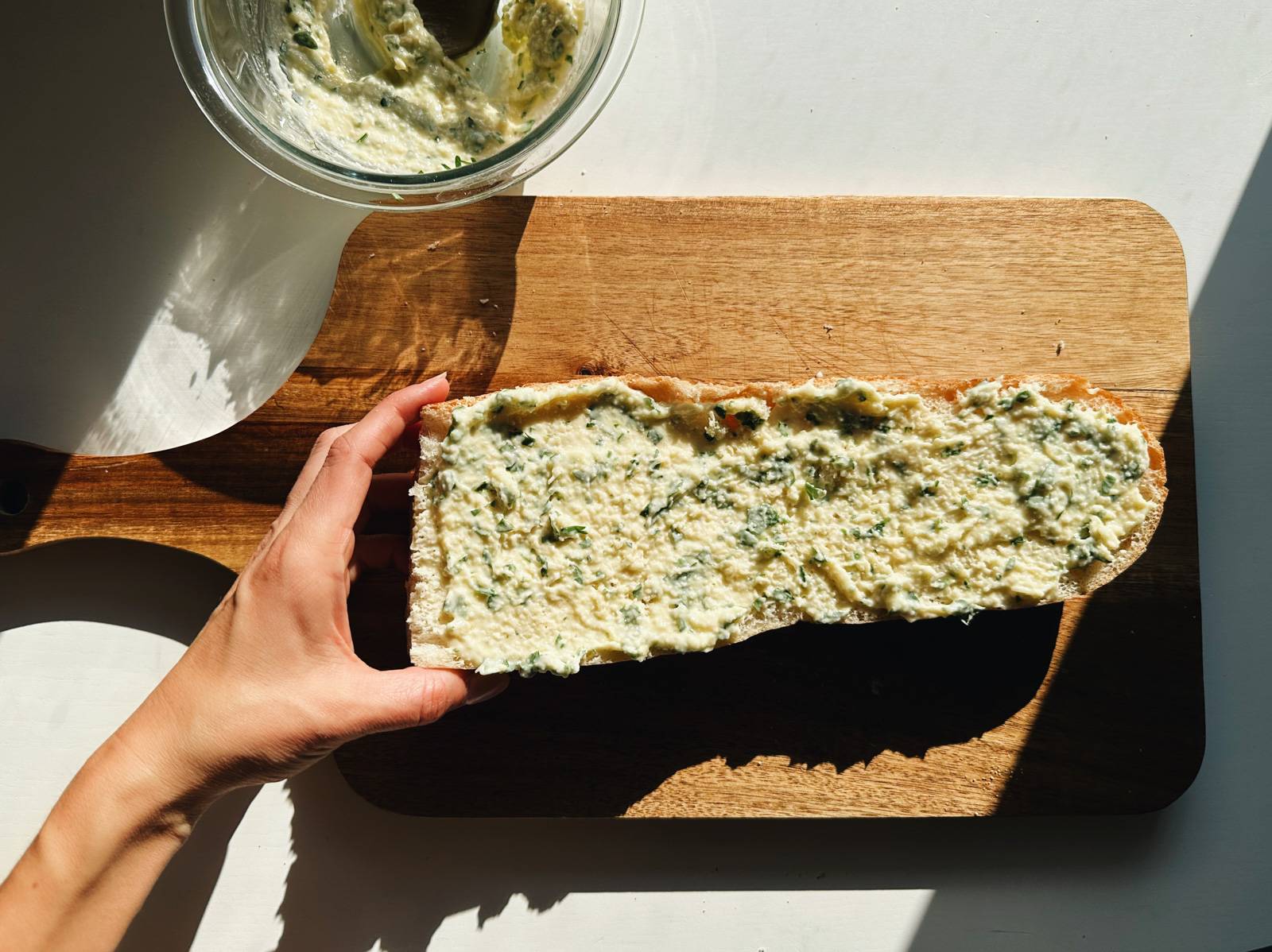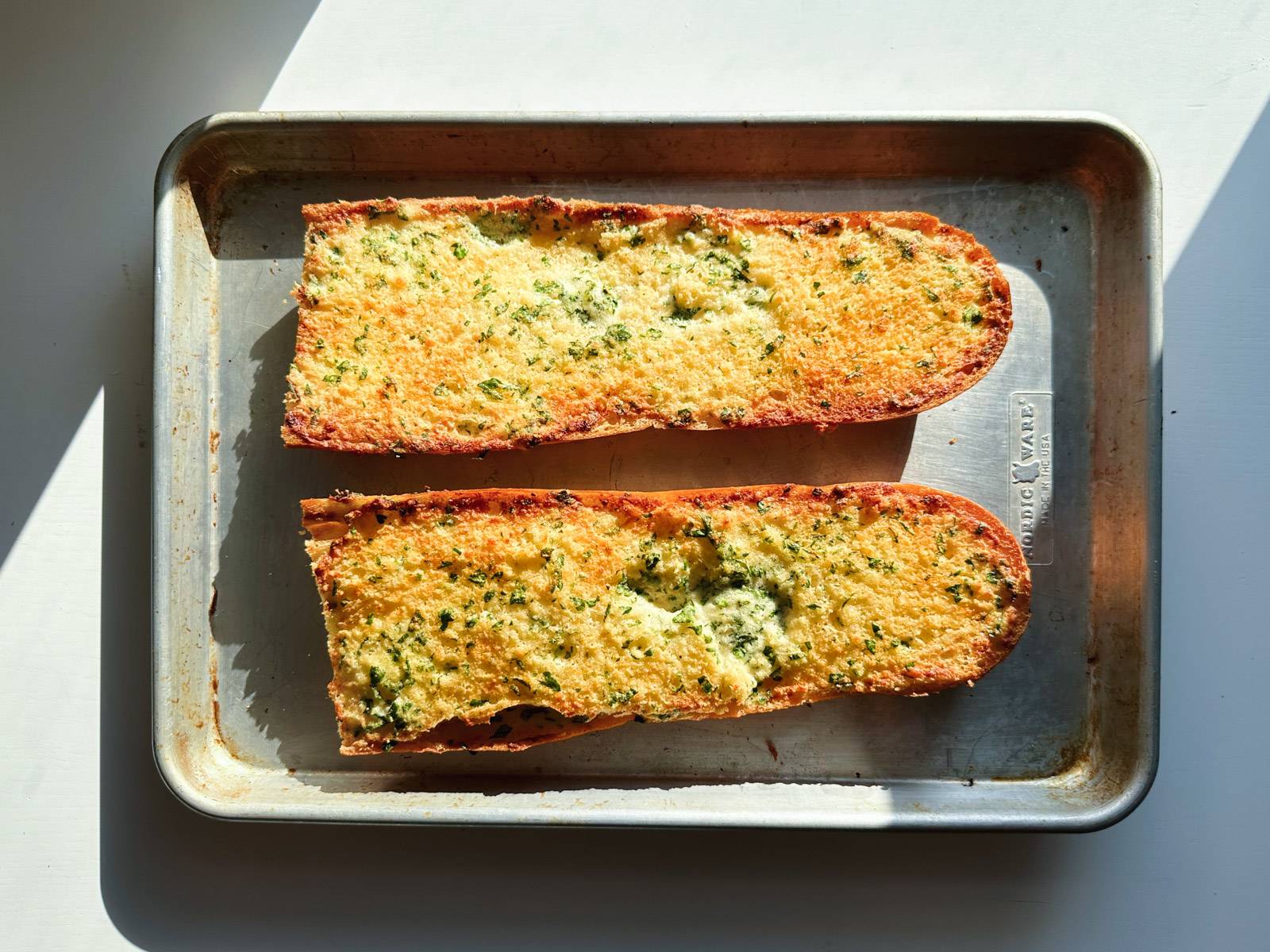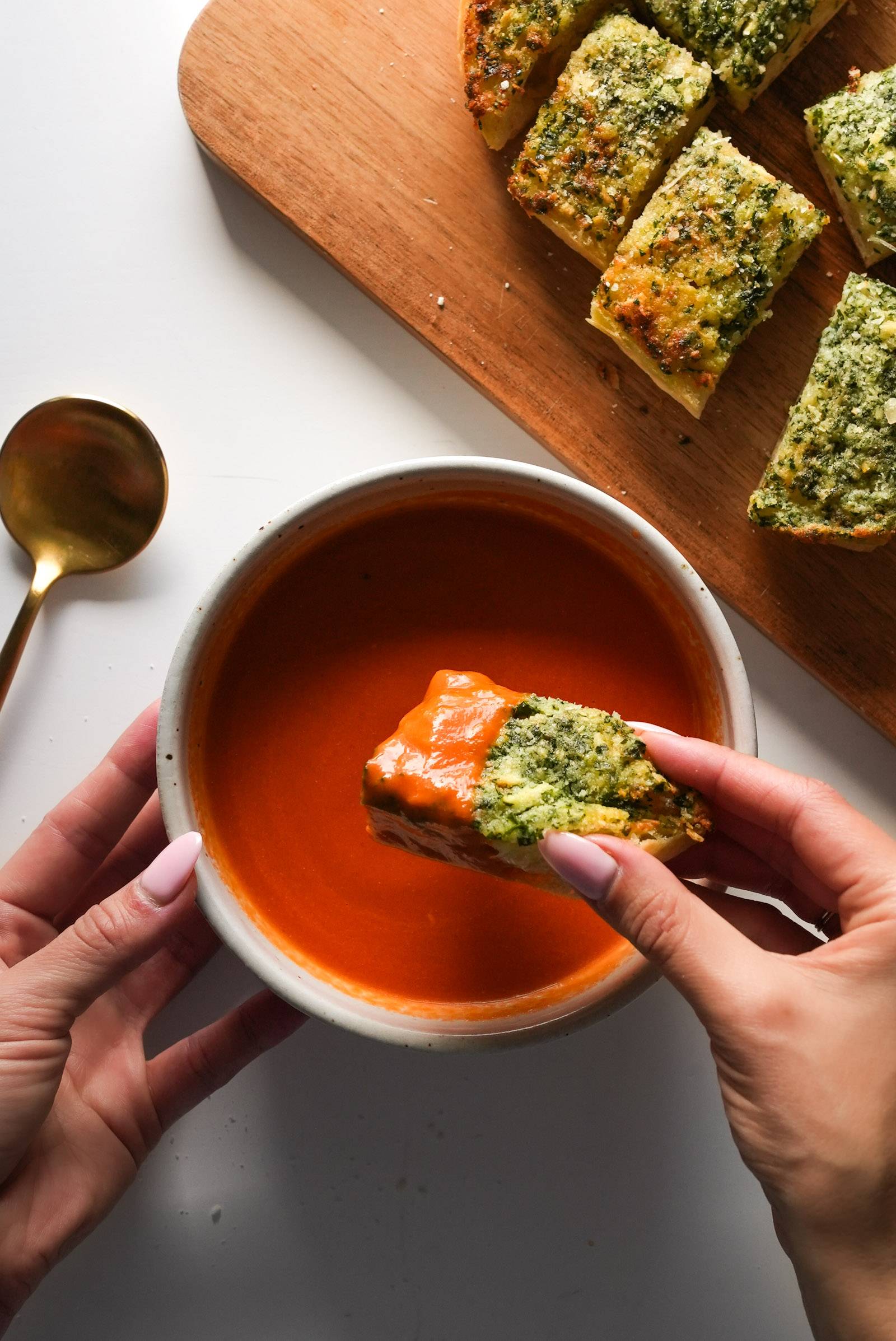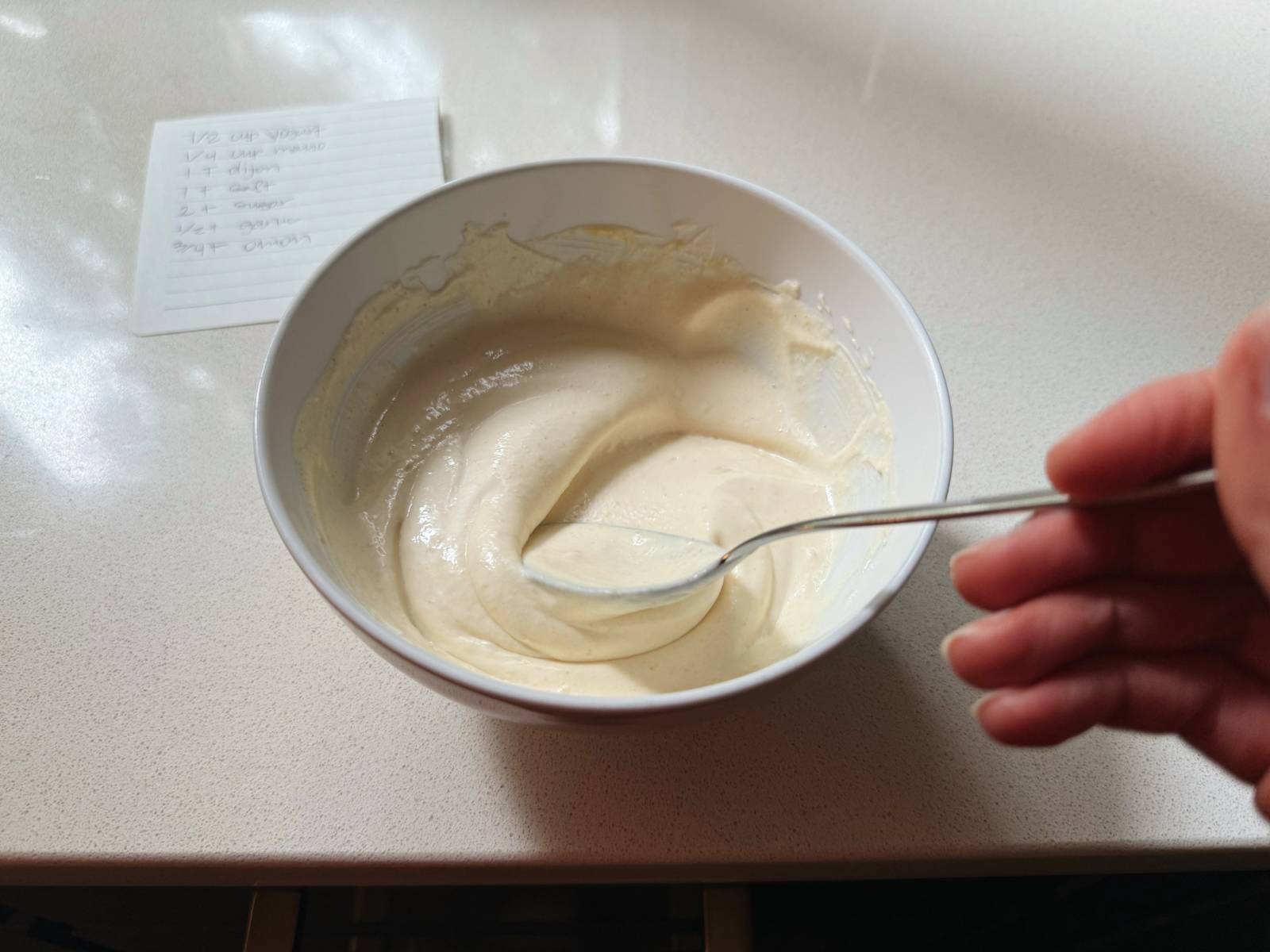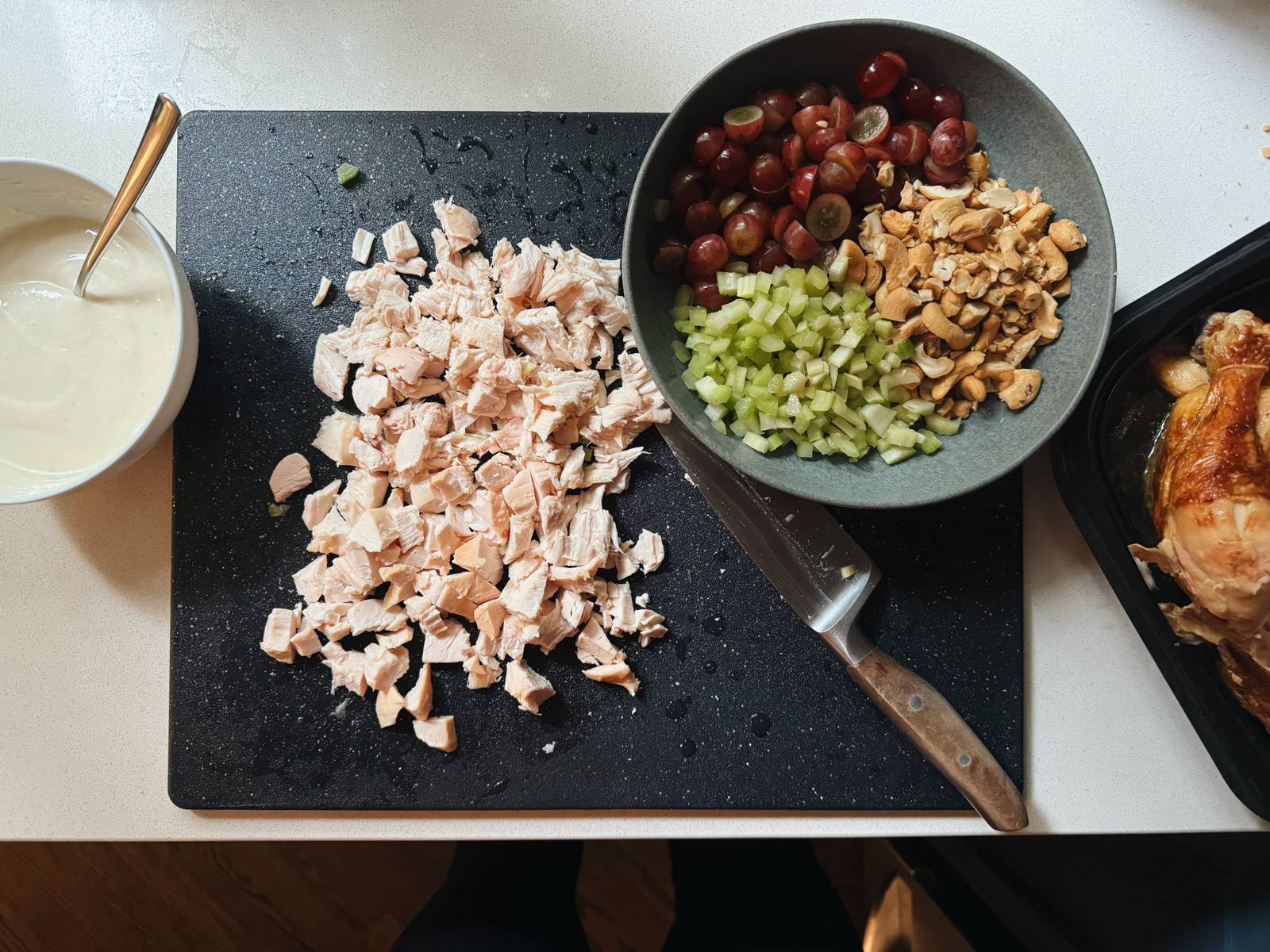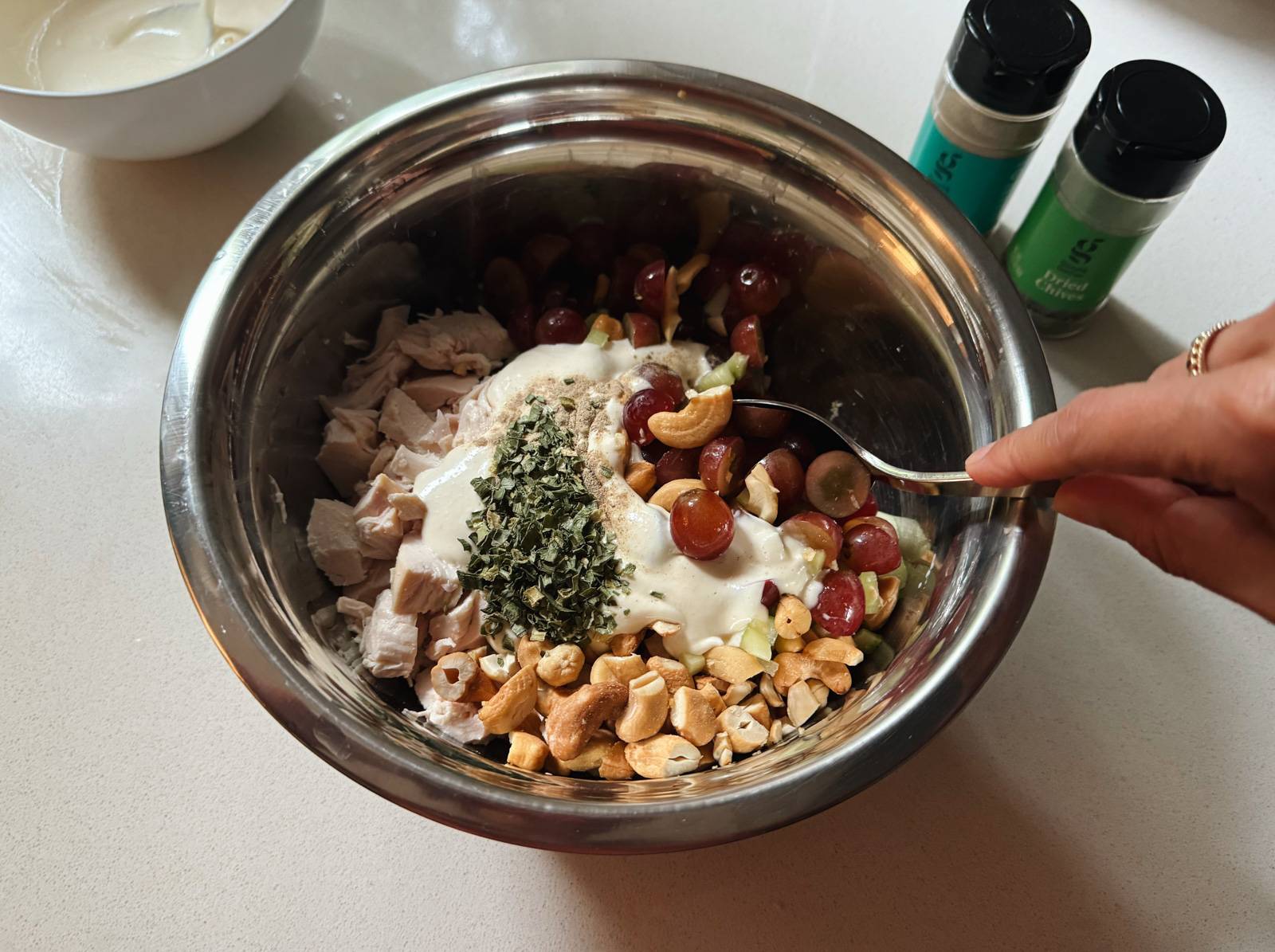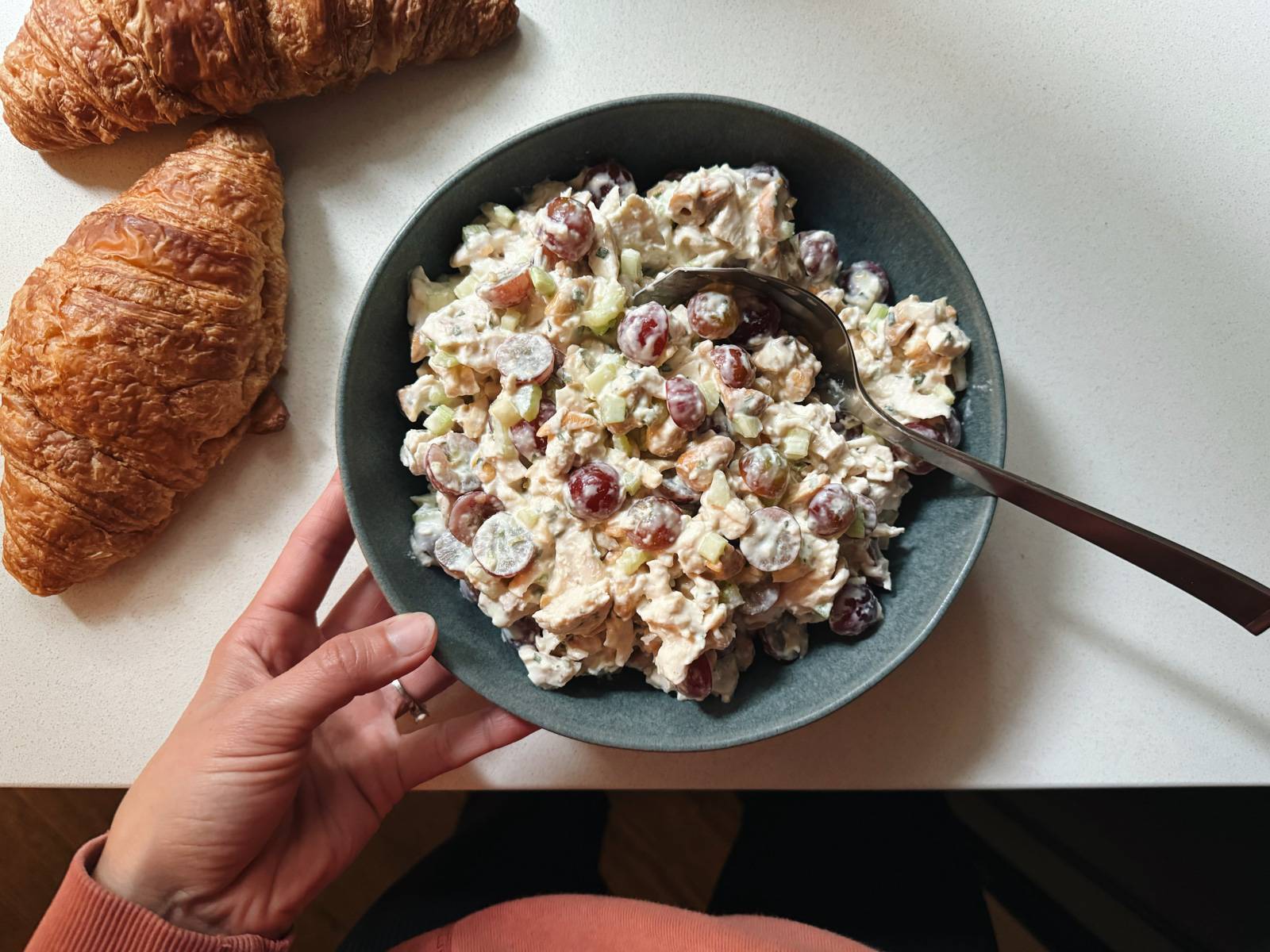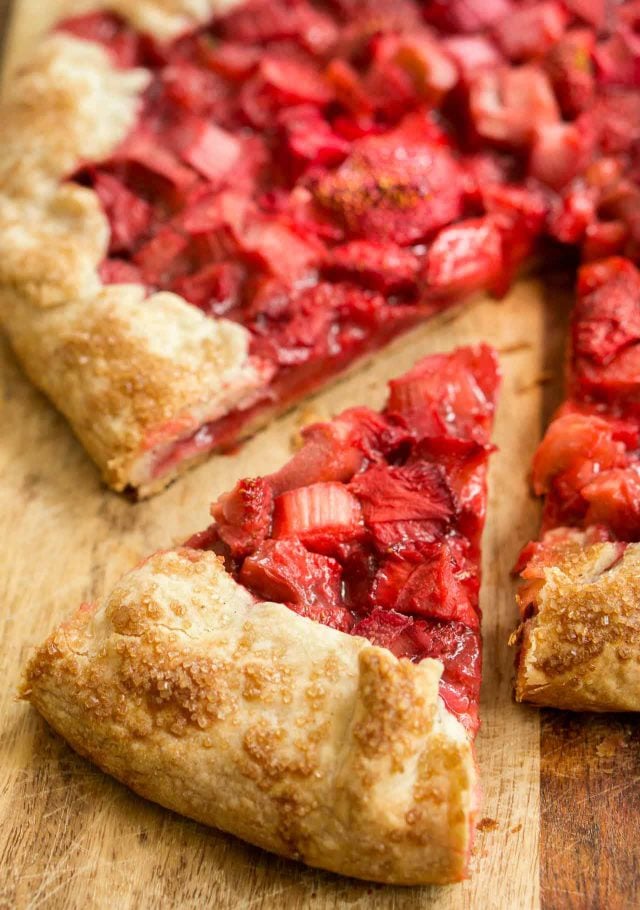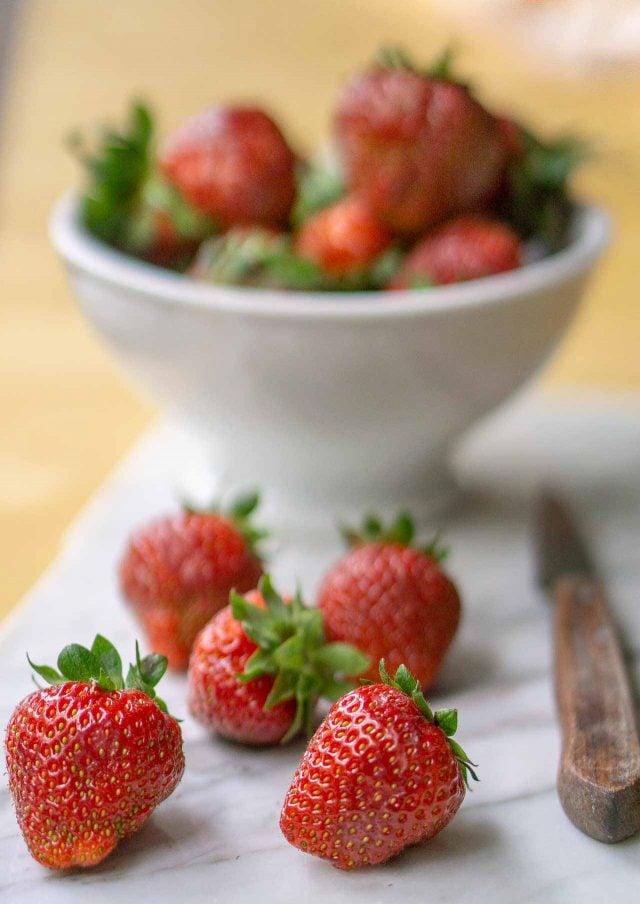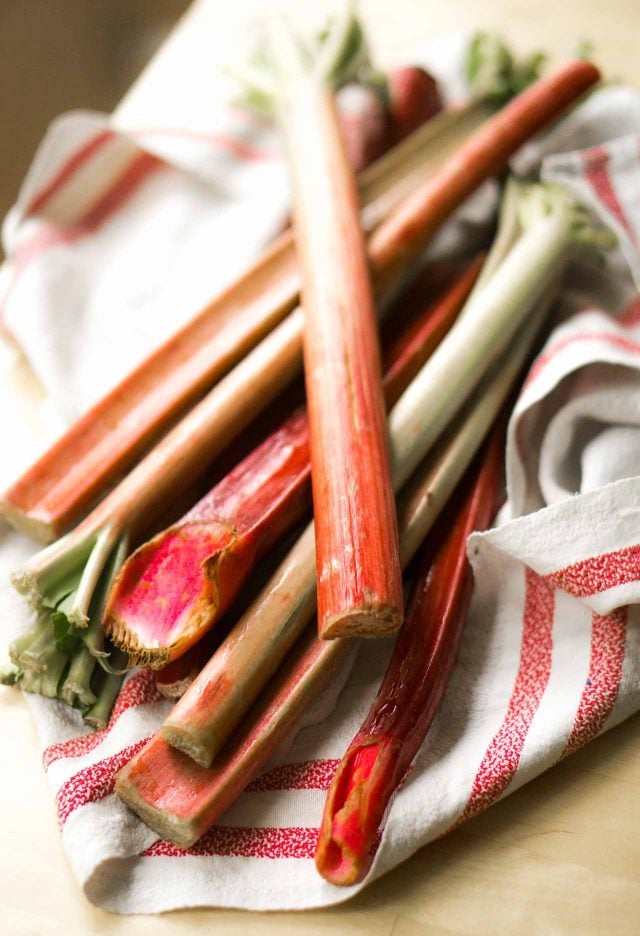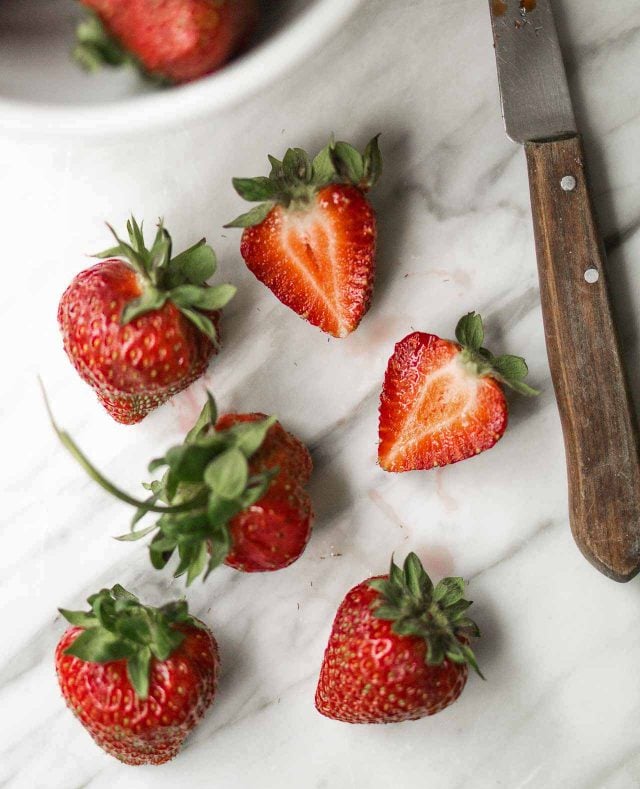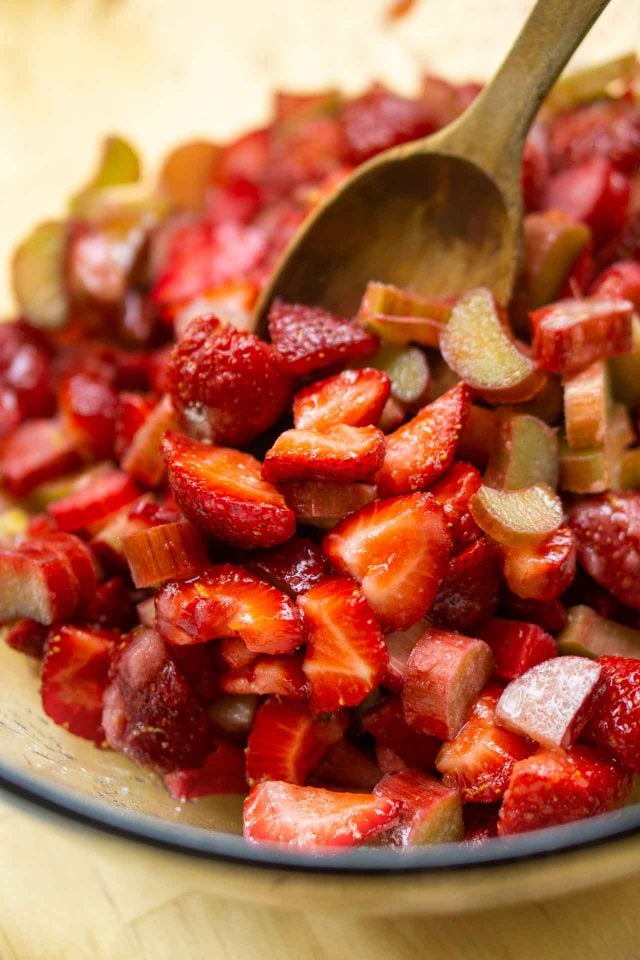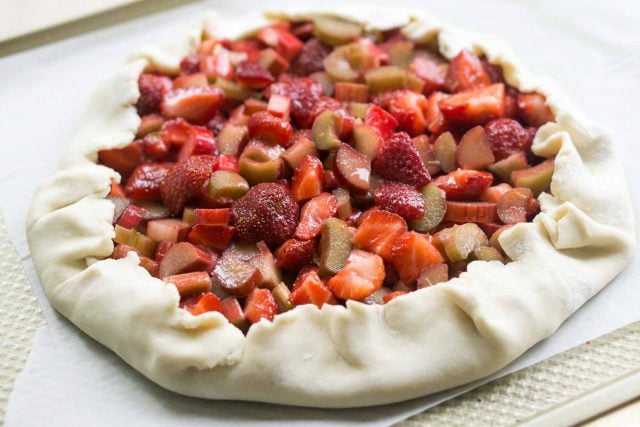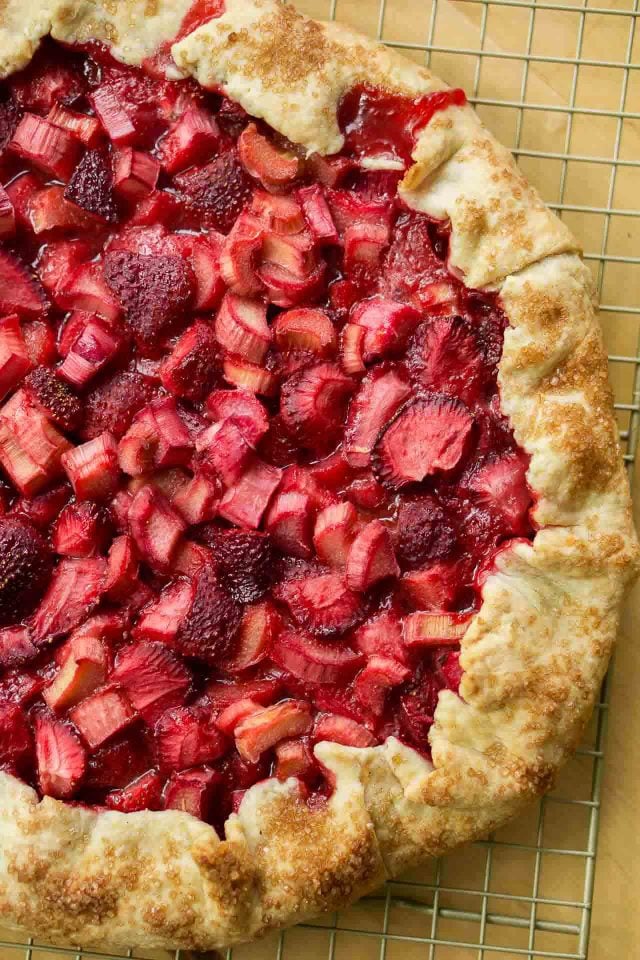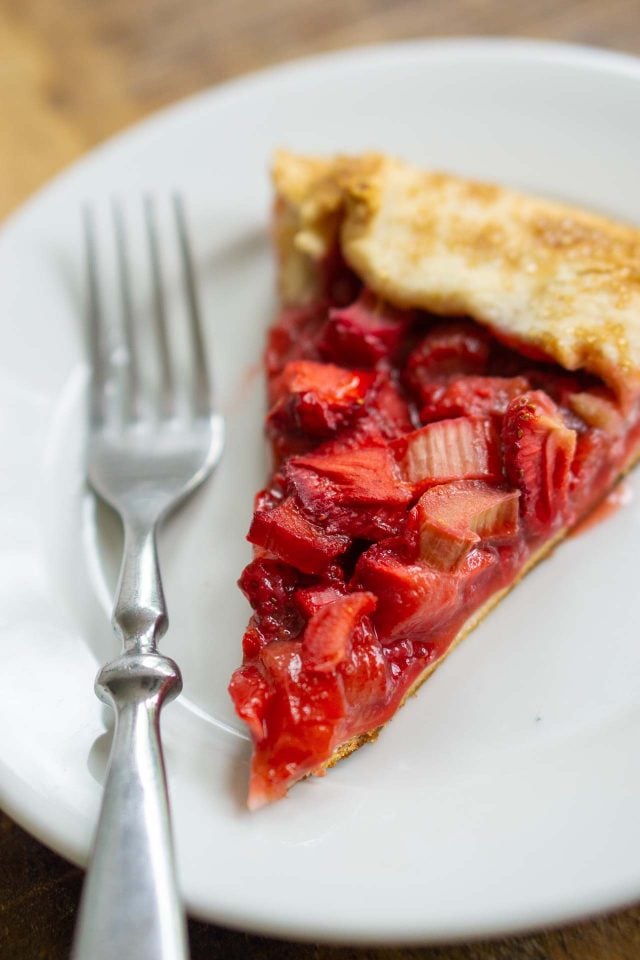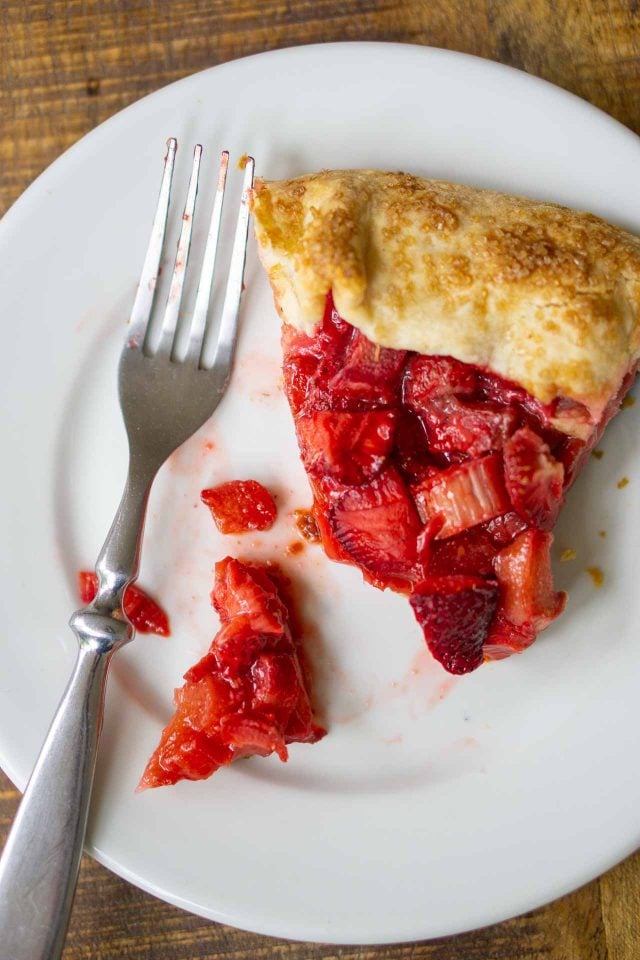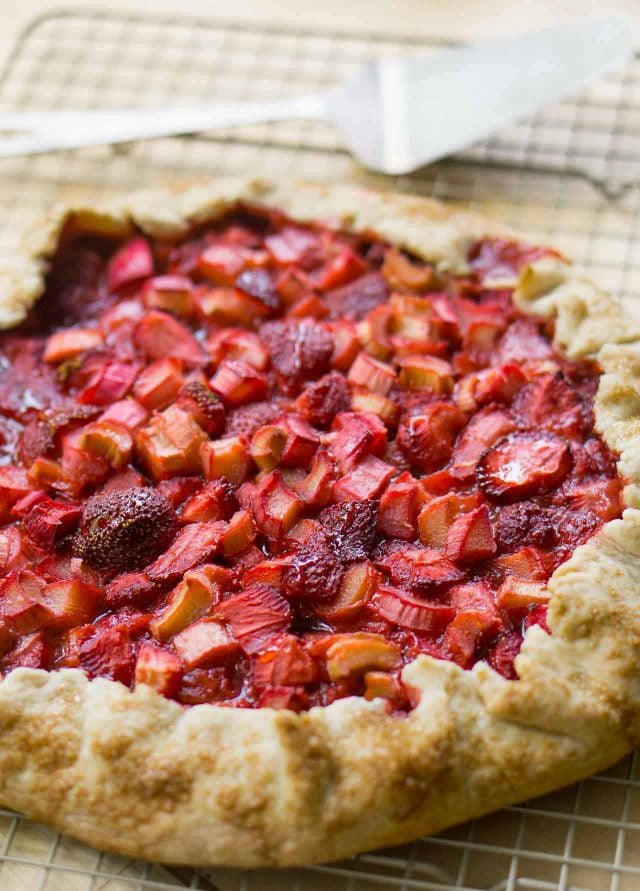There’s no need to purchase store-bought sauce, with this hearty and flavorful Homemade Spaghetti Sauce. Simple ingredients such as ground beef, onion, garlic, and spices of oregano and basil bring a bold flavor to this simple sauce.
This recipe is extremely simple. If you like easy Italian-inspired sauce that you can make at home then you need to try this Bolognese Sauce or this Alfredo Sauce recipe!
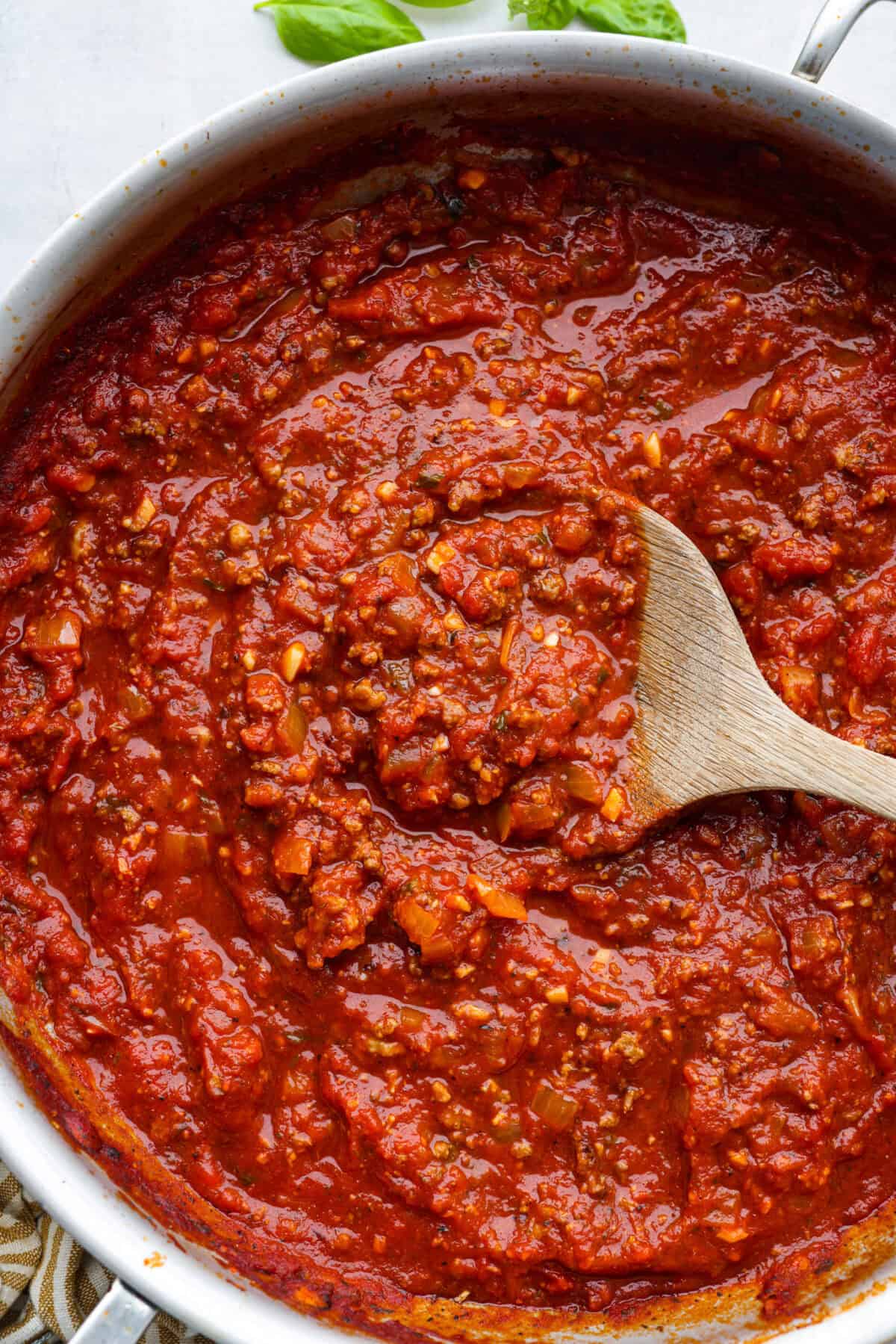
Reasons to Make Homemade Spaghetti Sauce
- Affordable: Making spaghetti sauce at home is easy, delicious, and way more affordable than restaurant prices!
- Quality Ingredients: Fresh ingredients make the best sauce and it tastes way better!
- Food Storage: You can easily prepare this sauce and have plenty for leftovers or for freezing and using later.
Homemade Spaghetti Sauce
Homemade spaghetti sauce is a classic recipe that can be prepared quickly and one everyone will love. This simple sauce is not only nostalgic but classic for a good reason. You’ll love the flavorful tomato base and the combination of the beef and sausage. And to make it even better, it’s finished off with fresh herbs and parmesan cheese. My family can not get enough of it!
It’s the perfect spaghetti sauce to use in multiple recipes. Make a big batch and use it in recipes like this sheet pan lasagna, rigatoni, or this easy spaghetti pie!
Ingredients in Spaghetti Meat Sauce
Everyone has their favorite recipe, but the best sauces are often the most basic. Use simple ingredients to make this delicious homemade spaghetti sauce.
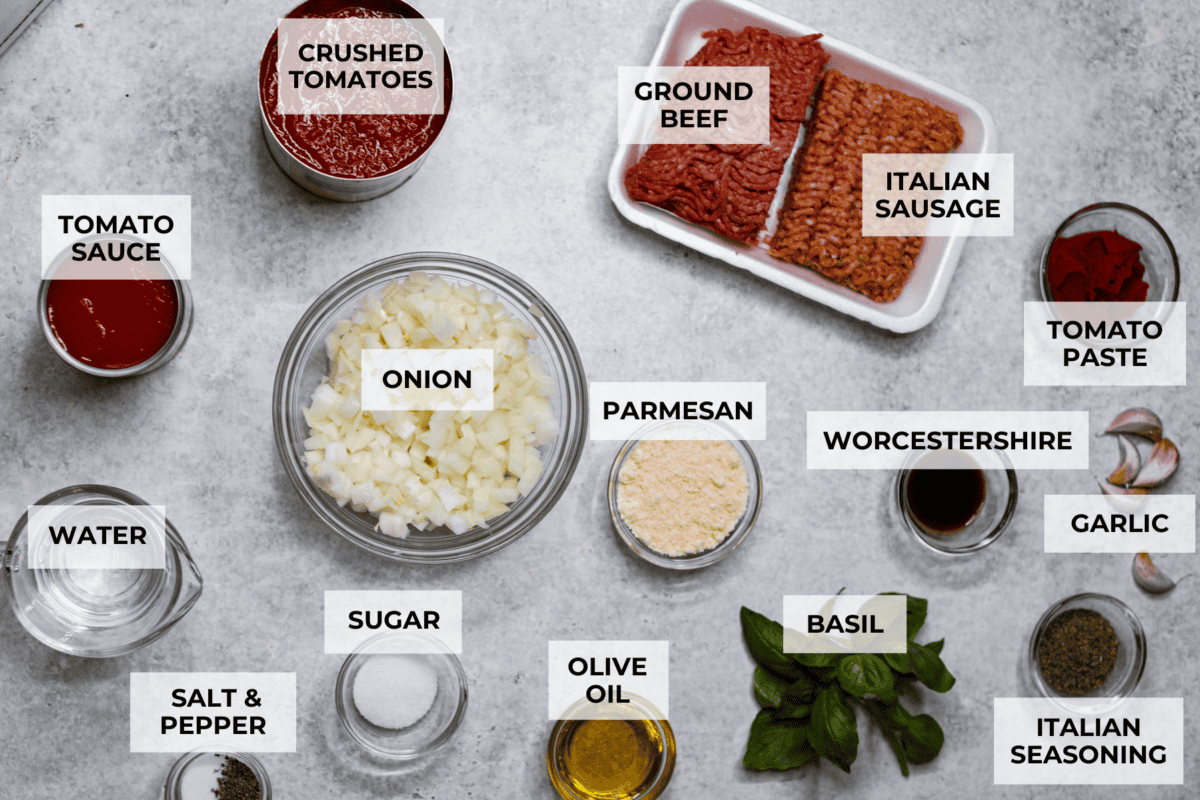

- Olive Oil: choose a high-quality olive oil to brown the meat and sauté the onions and garlic. This will only add to the flavor.
- Ground Beef: the type of ground beef is entirely up to and you can also switch out the ground beef for ground sausage.
- Yellow Onion: the onion brings a mild bite to the sauce which is a key flavor in spaghetti sauce.
- Garlic Cloves: these minced cloves bring the most powerful flavor that is so common in Italian recipes. Using freshly minced garlic will also bring about the best flavor.
- Tomato Paste: adding the tomato paste helps to thicken the sauce, but it also brings a strong flavor that is heightened when stirred in and cooked after the onions and garlic are cooked.
- Diced Tomatoes or Crushed Tomatoes: for a smoother sauce use crushed tomatoes and for a chunkier sauce go with diced tomatoes. Either one makes a delicious sauce.
- Water: this helps to bring the sauce together and you may use more or less to thicken or thin it.
- Sugar: This helps balance the acidity of the tomatoes with a little sweetness.
- Worcestershire: The umami flavor this brings to the sauce makes the meatiness deeper and more complex.
- Italian Seasoning: this classic spice adds a peppery flavor to the sauce.
- Grated Parmesan Cheese: Adding parmesan cheese is optional, but strongly suggested for that delicious cheesy flavor.
- Fresh Basil: the fresh aroma of this peppery-flavored leaf also adds a small hint of mint.
How to Make Spaghetti Sauce
Follow my easy step-by-step instructions below for making homemade spaghetti sauce. You’re going to love this recipe!
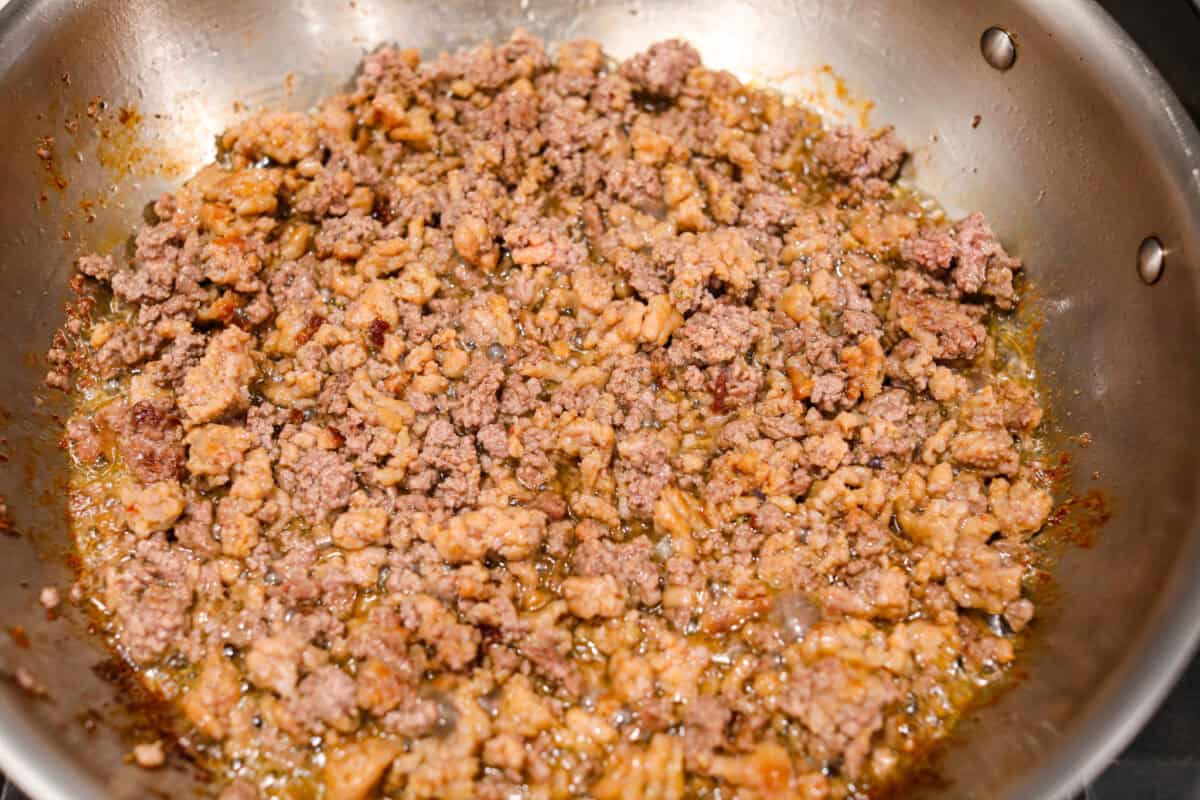

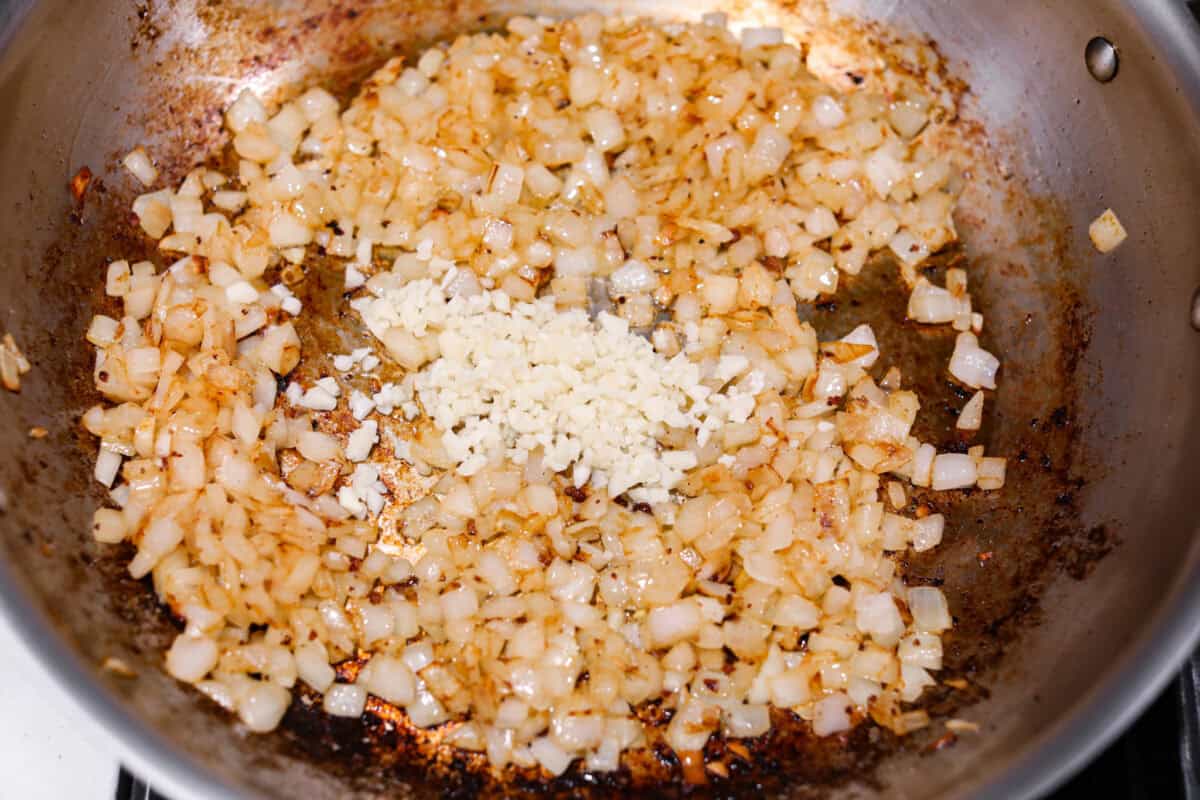

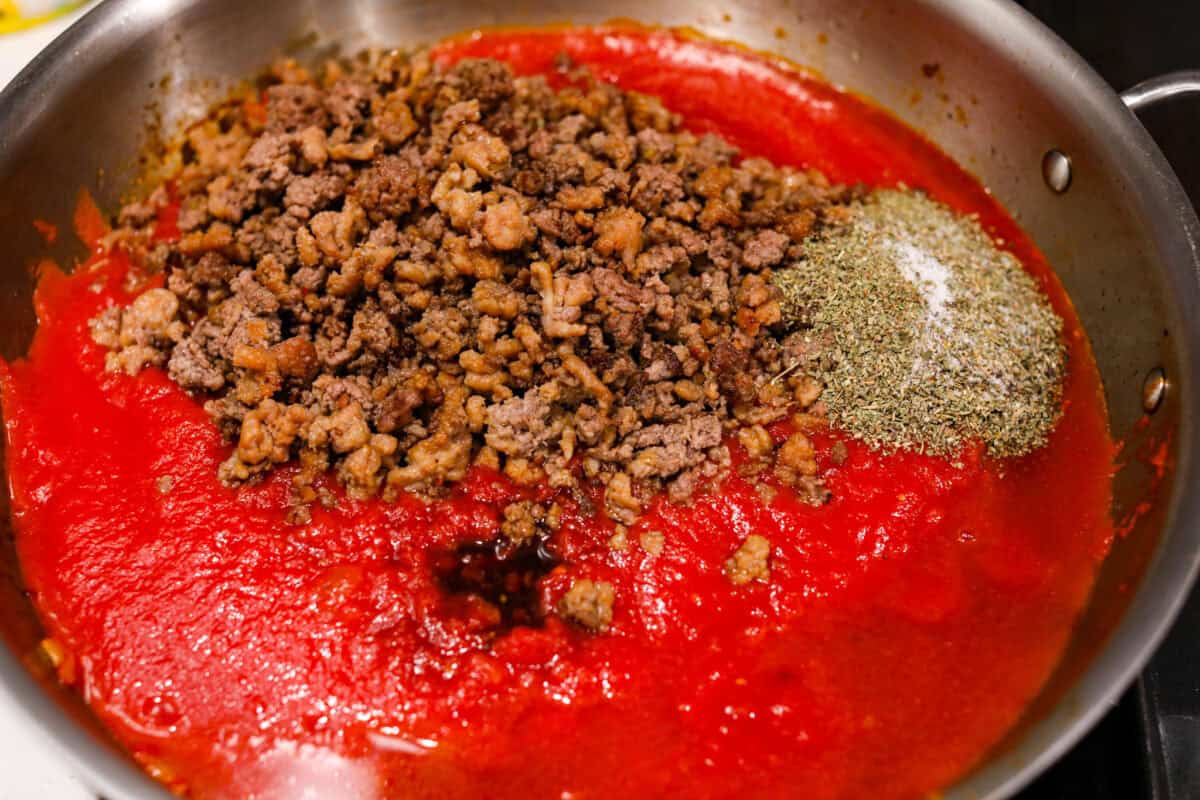

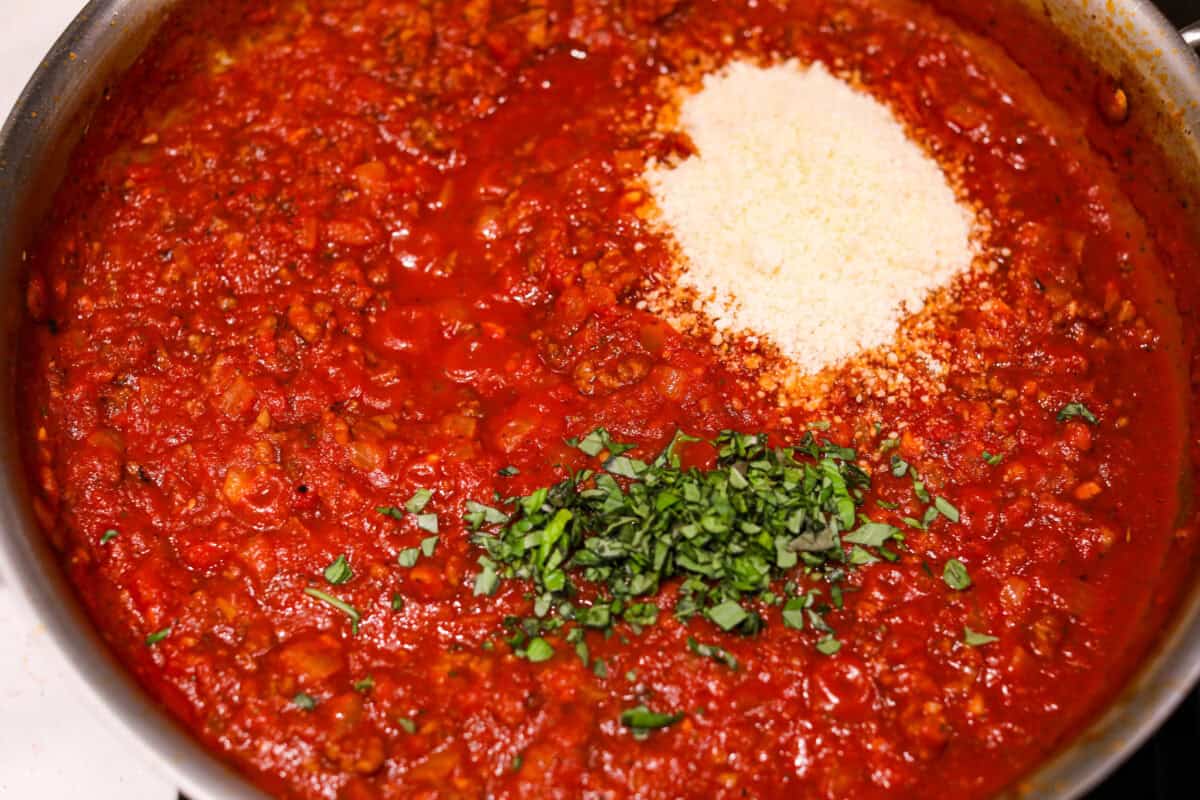

- Brown the Meat: Add 1 tablespoon of the olive oil to a large skillet and heat over medium-high heat. Add the ground beef and Italian sausage and cook until no pink remains, breaking up the meat as it cooks. Use a slotted spoon to remove the meat from the pan and drain the fat, except for a couple of tablespoons you may leave in the pan.
- Sauté the Onions and Garlic: Add the remaining olive oil and the onions to the pan and cook over medium heat for 3-4 minutes, until the onions turn translucent. Add the garlic and cook for another minute, until the garlic is very fragrant.
- Add the Cooked Meat and Simmer the Sauce: Stir in the tomato paste and cook for another minute. Once the tomato paste becomes fragrant, add the meat and the remaining ingredients except the parmesan cheese and basil. Cook until boiling. Reduce the heat and simmer for 20-25 minutes.
- Stir in Cheese and Basil: Stir the parmesan and basil into the finished sauce and serve over your choice of noodles.
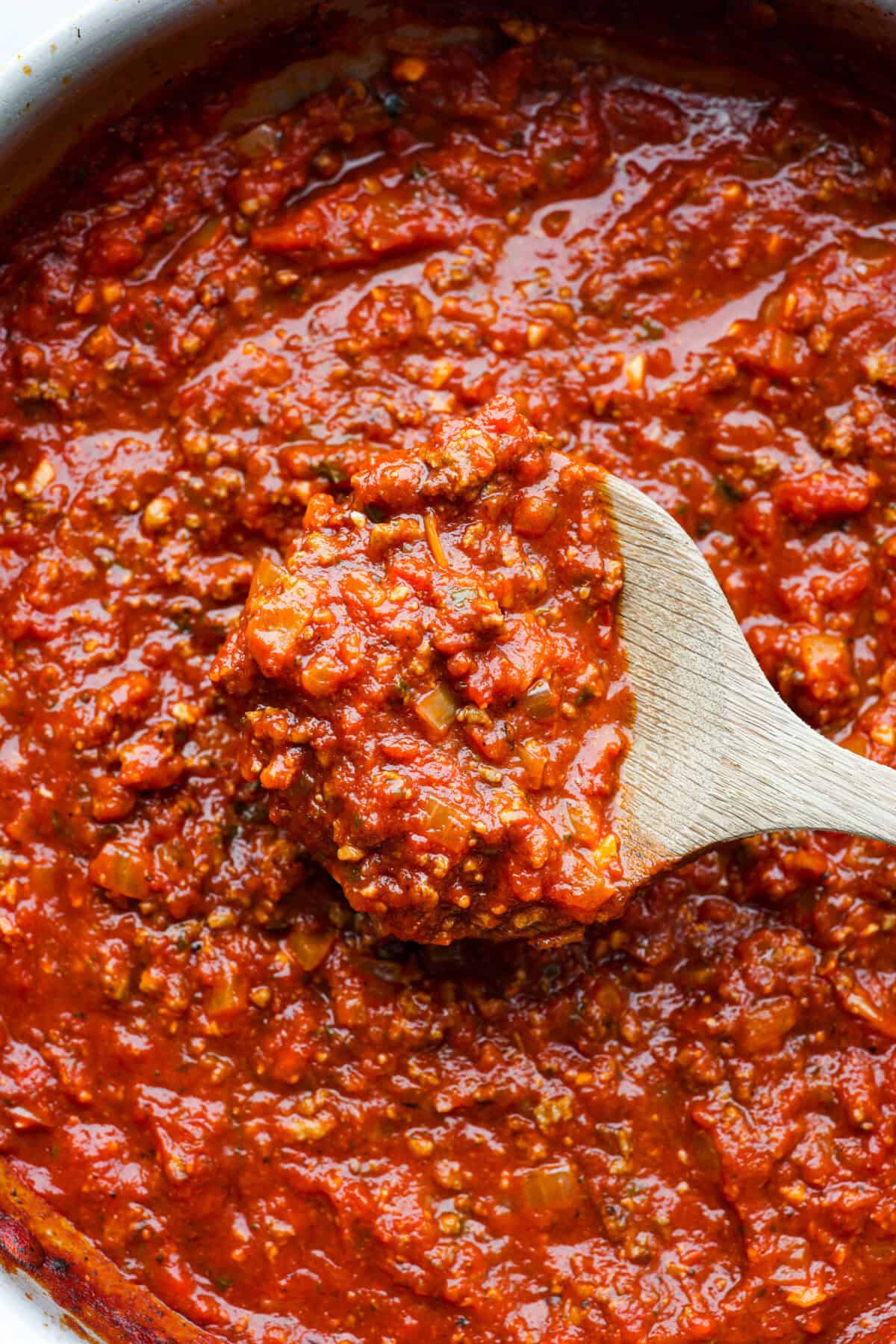

Instant Pot Instructions
It’s easy to make spaghetti sauce in the Instant Pot! Follow these instructions for using the instant pot:
- Brown the Meat: Push the “sauté” button to heat the olive oil. Brown the meat and use a slotted spoon to remove it.
- Add Onion and Garlic: Add the remaining tablespoon of olive oil and then sauté the onion for 4 minutes and then add the garlic to cook for an additional 1 minute.
- Add Remaining Ingredients: Add the remaining ingredients except for the parmesan and basil.
- Seal and Cook: Cover and seal the lid. Set the manual/pressure cook button to 10 minutes. When the time is up let the pressure release naturally for 10 minutes and move the valve to vent.
- Stir in Cheese and Enjoy: Remove the lid and stir in the grated parmesan.
Tips for Making the Best Homemade Spaghetti Sauce
Make homemade spaghetti sauce just the way you like it! You have the control to choose the consistency, adjust the seasonings, or make it meatless. Here’s how:
- Thinner Sauce: For a thinner sauce, that is big on tomato chunks use canned diced tomatoes.
- Thicker Sauce: Use crushed tomatoes for a smoother sauce that has a thicker base to it.
- Garlic: You can add more than 5 garlic cloves for added flavor. You can also substitute 1 tablespoon of garlic powder if you dislike the fresh garlic pieces’ texture.
- Sugar: I think sugar is the secret ingredient because it enhances the tomatoes’ sweetness and balances out the acidity. You may omit the sugar if you prefer.
- Herbs: Italian seasoning has all the wonderful herbs that add flavor to this sauce, but you may add additional oregano and fresh basil if you’d like to intensify the herbs.
- Meatless: You can easily leave the meat out of this sauce for more of a marinara-type sauce. If you choose to leave out the meat I suggest using a 28-ounce can of crushed tomatoes and a 28-ounce can of diced tomatoes.
How to Store Spaghetti Sauce
Homemade spaghetti sauce is perfect for storing in the fridge and the freezer! I like to make a big batch to have on hand in the freezer for busy days.
- In the Refrigerator: Place the spaghetti sauce in an airtight container. Store it in the refrigerator for up to 5 days.
- In the Freezer: This sauce can easily be frozen and saved for later. To freeze the sauce let it come to room temperature before placing it in a ziptop bag or an air-tight storage container. Make sure to include the date. The sauce will last for about 6 months in the freezer.
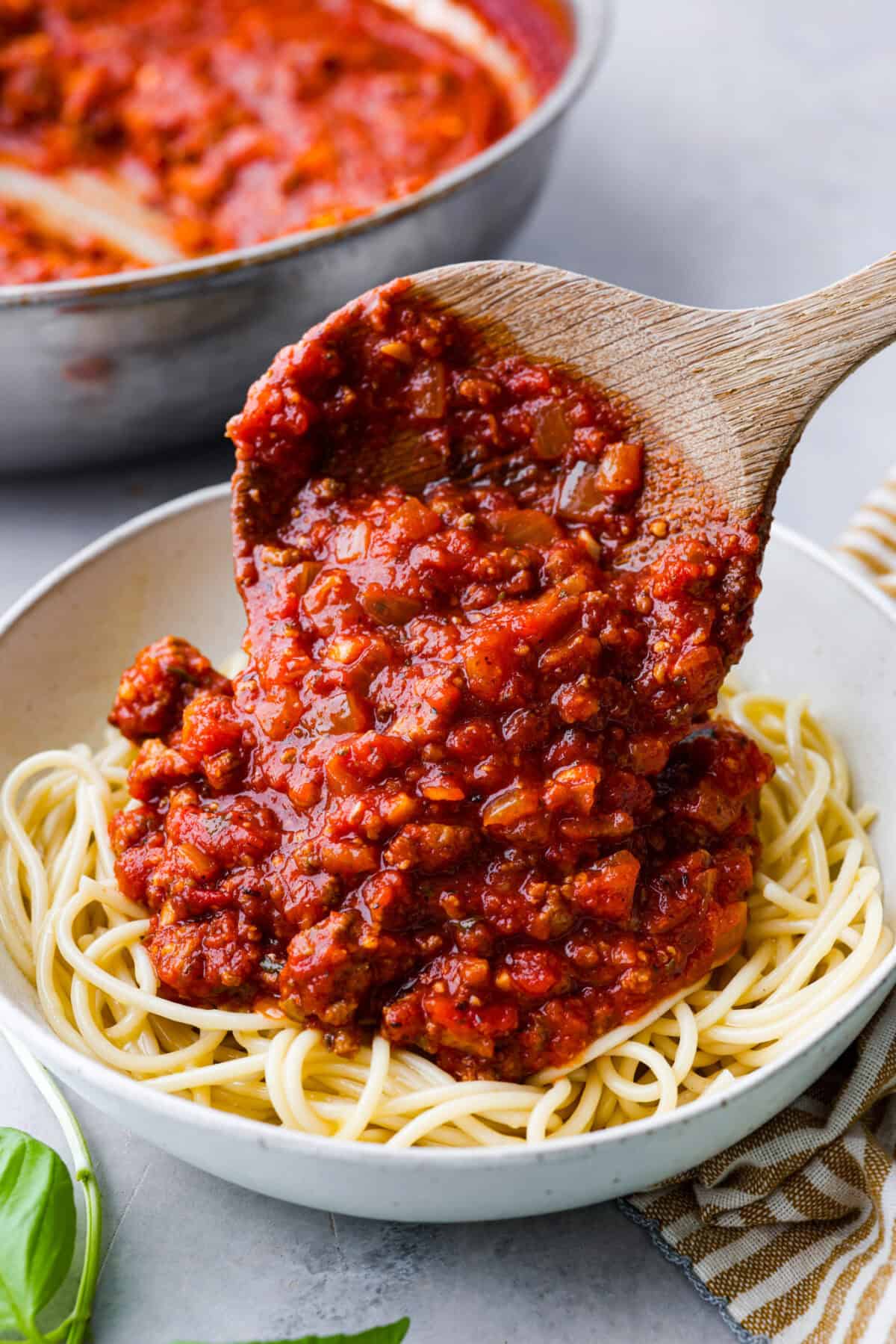

More Delicious Pasta Recipes
Pin this now to find it later
- Add 1 tablespoon of the olive oil to a large skillet and heat over medium-high heat. Add the ground beef and Italian sausage and cook until no pink remains, breaking up the meat as it cooks.
- Use a slotted spoon to remove the meat from the pan and drain the fat, except for a couple of tablespoons you may leave in the pan.
- Add the remaining olive oil and the onions to the pan and cook over medium heat for 3-4 minutes, until the onions turn translucent. Add the garlic and cook for another minute, until the garlic is very fragrant.
- Stir in the tomato paste and cook for an additional minute. Once the tomato paste becomes fragrant, add the meat and the remaining ingredients except the parmesan cheese and basil. Cook until boiling. Reduce the heat and simmer for 20-25 minutes.
- Stir the parmesan and basil into the finished sauce and serve over your choice of noodles.
Originally Posted on May 25, 2020
Calories: 231kcalCarbohydrates: 6gProtein: 10gFat: 19gSaturated Fat: 6gPolyunsaturated Fat: 2gMonounsaturated Fat: 9gTrans Fat: 0.3gCholesterol: 43mgSodium: 637mgPotassium: 286mgFiber: 1gSugar: 3gVitamin A: 181IUVitamin C: 4mgCalcium: 50mgIron: 2mg
Nutrition information is automatically calculated, so should only be used as an approximation.



